International Mountain Day
Dec 12 – 14


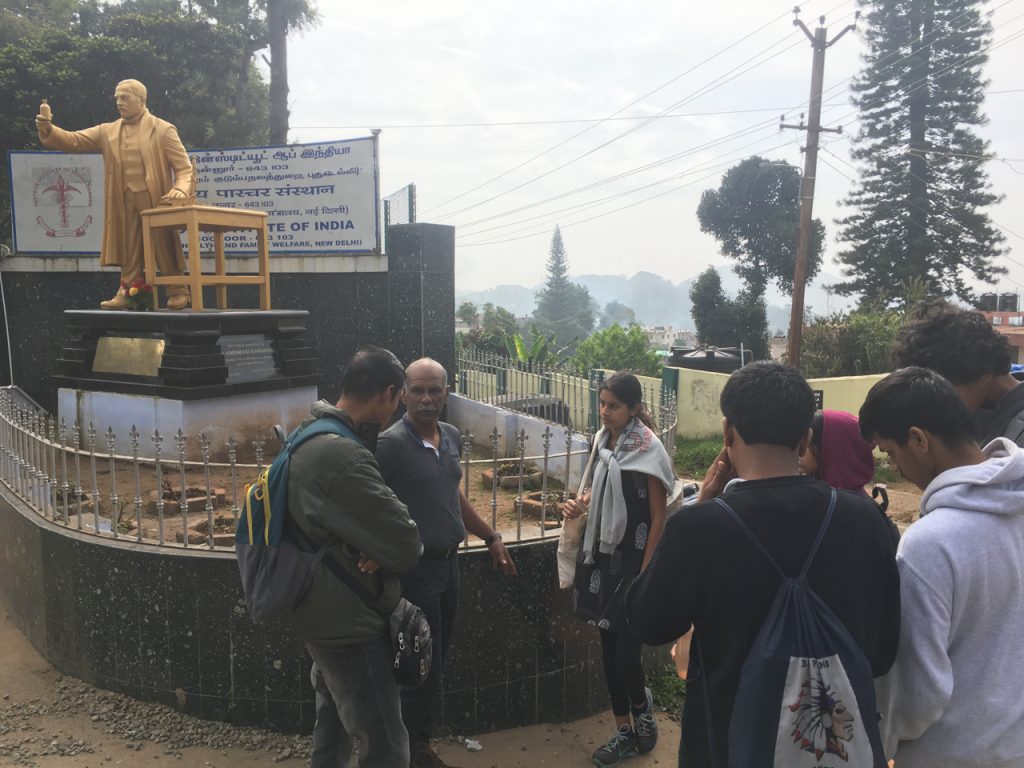


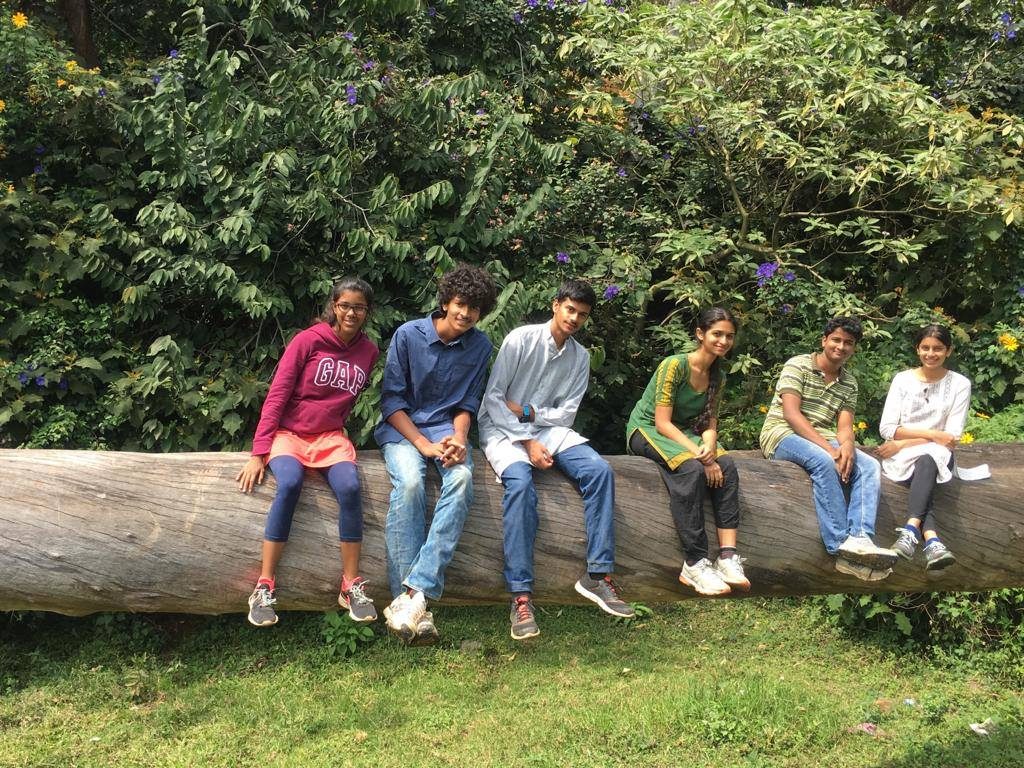
11 December happened to be International Mountain Day, and keeping in tune with this years theme ‘Mountains Matter,’ Clean Coonoor along with the Keystone Foundation of Kotagiri held a sensitisation programme for a group of students from Chennai on a three day visit to the Nilgiris. The event was held at the Keystone premises today, and chiefly centred on why ‘Mountains Matter.’
Read More
Save our Sholas ; Save our Springs Run-a-thon
Oct 27

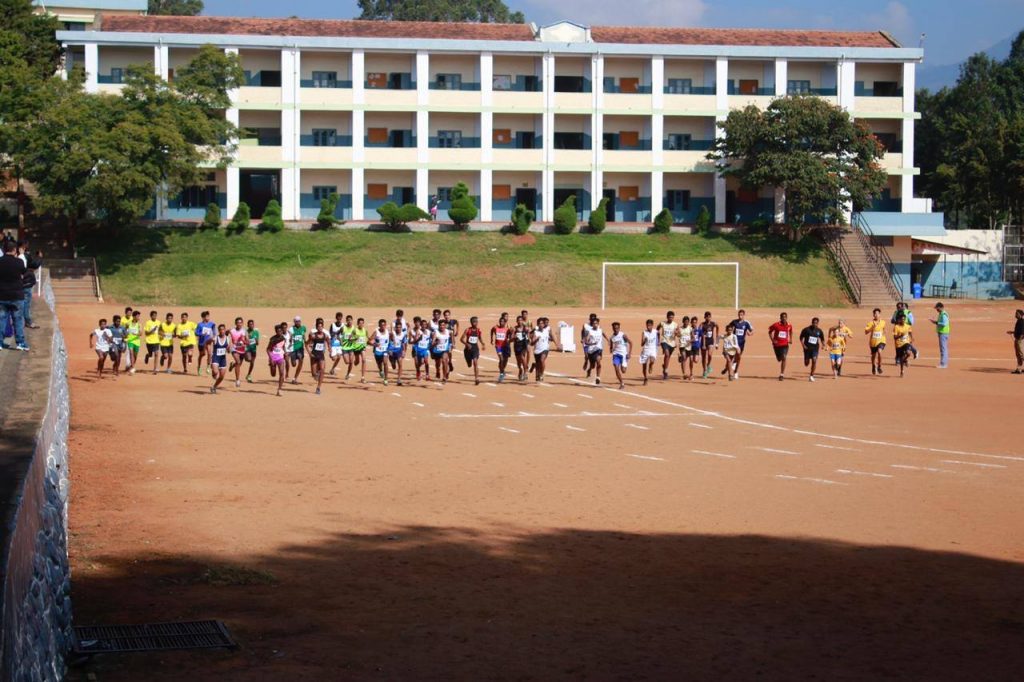
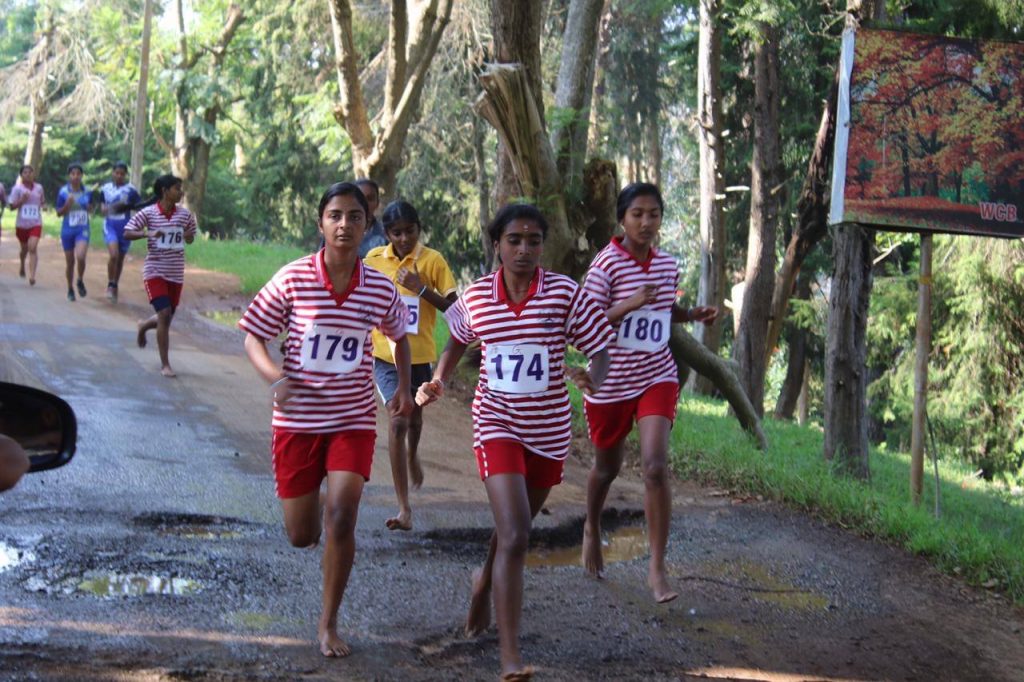
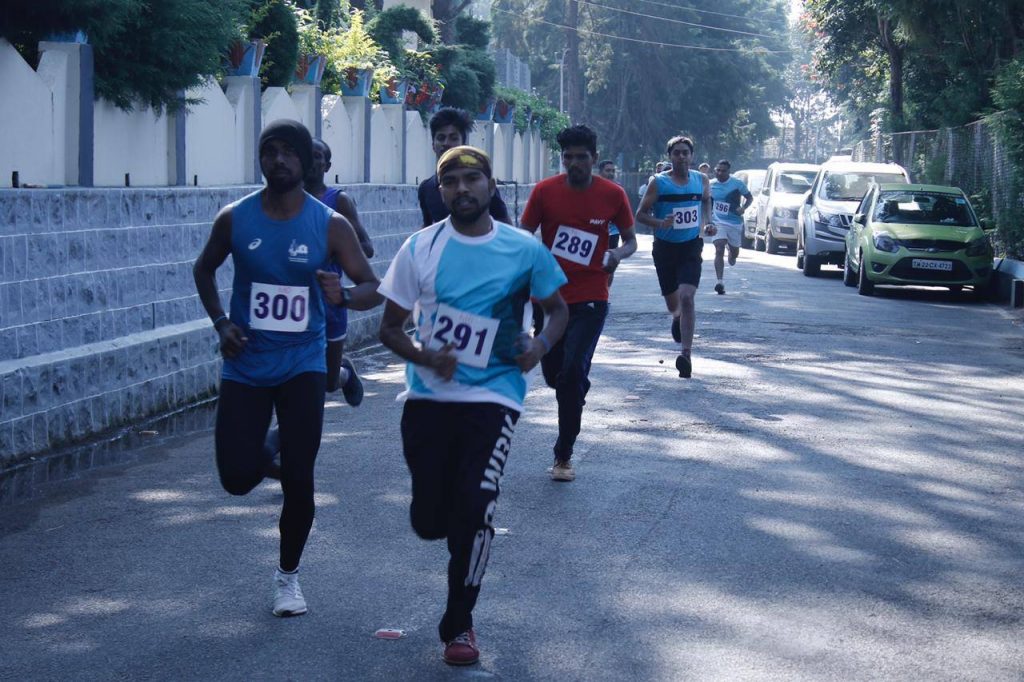
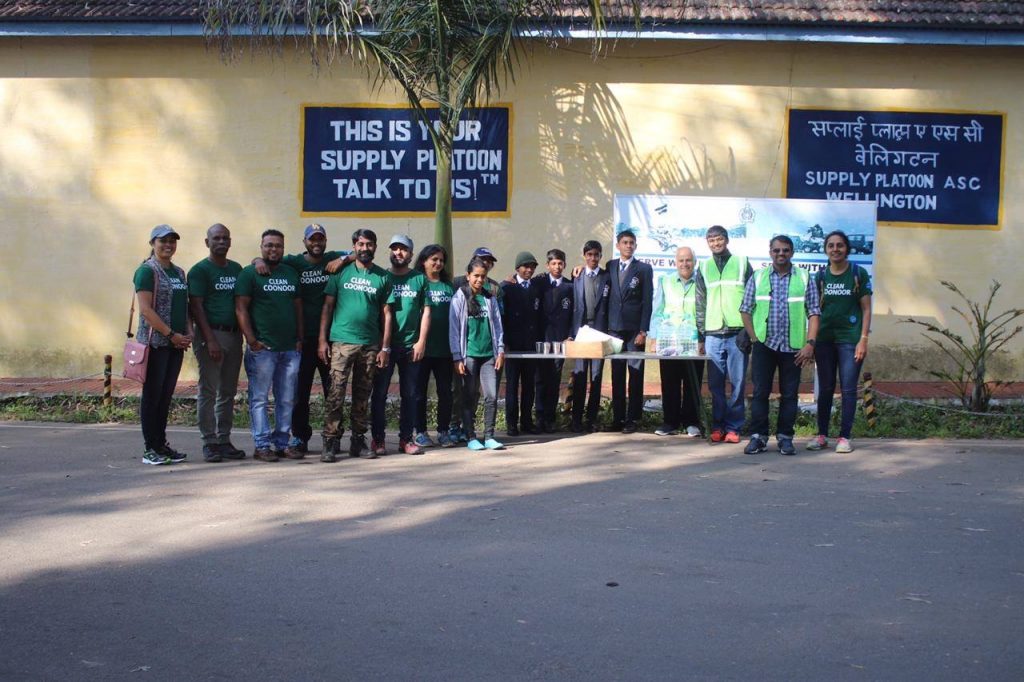
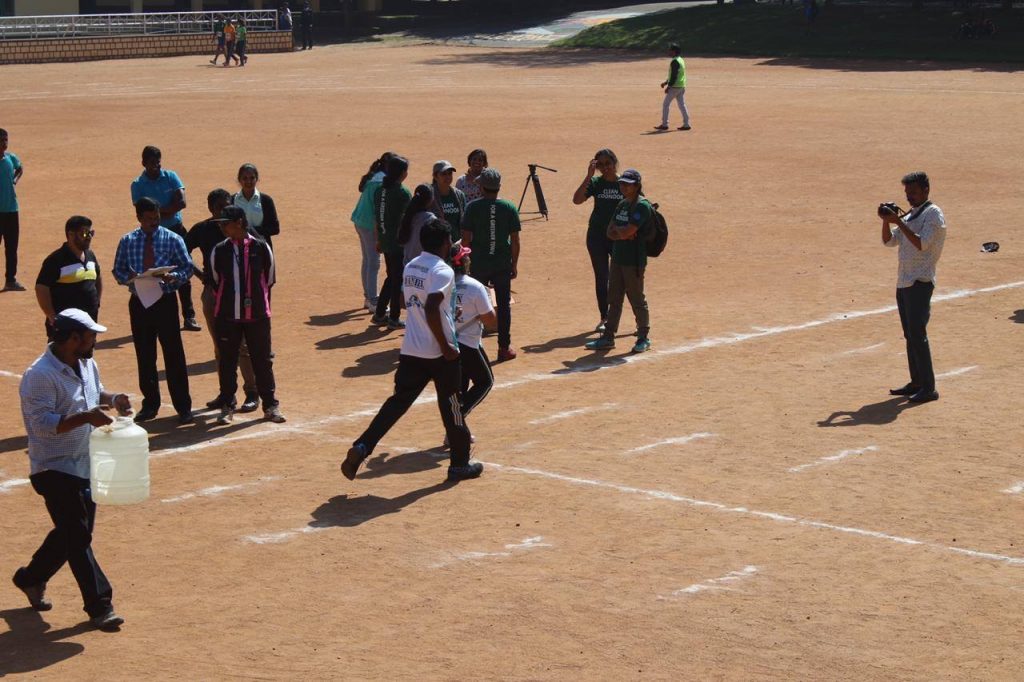
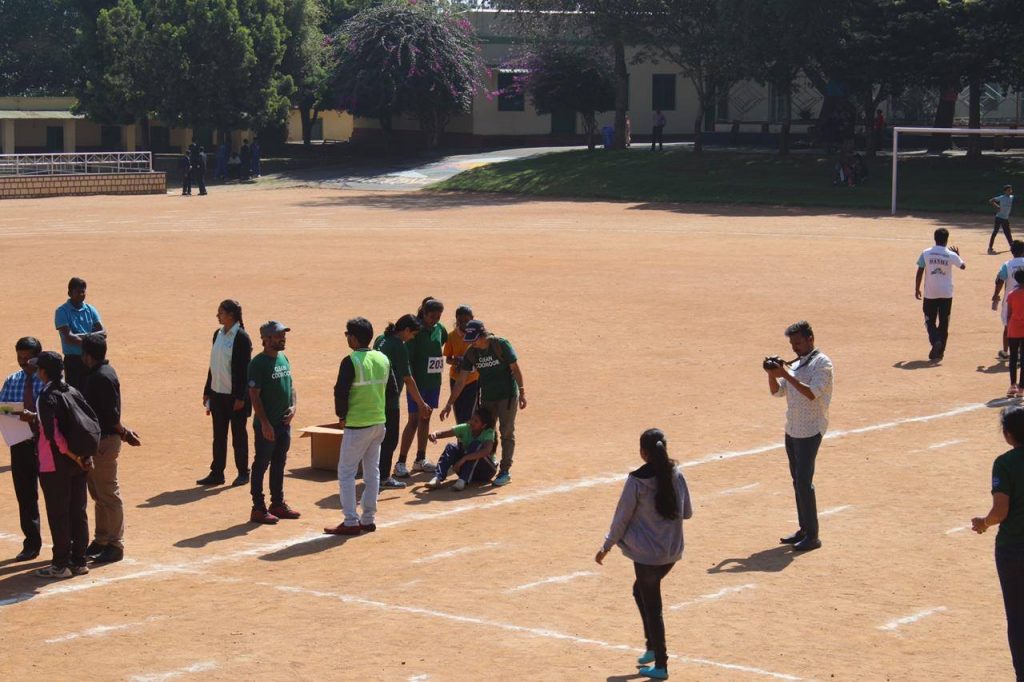
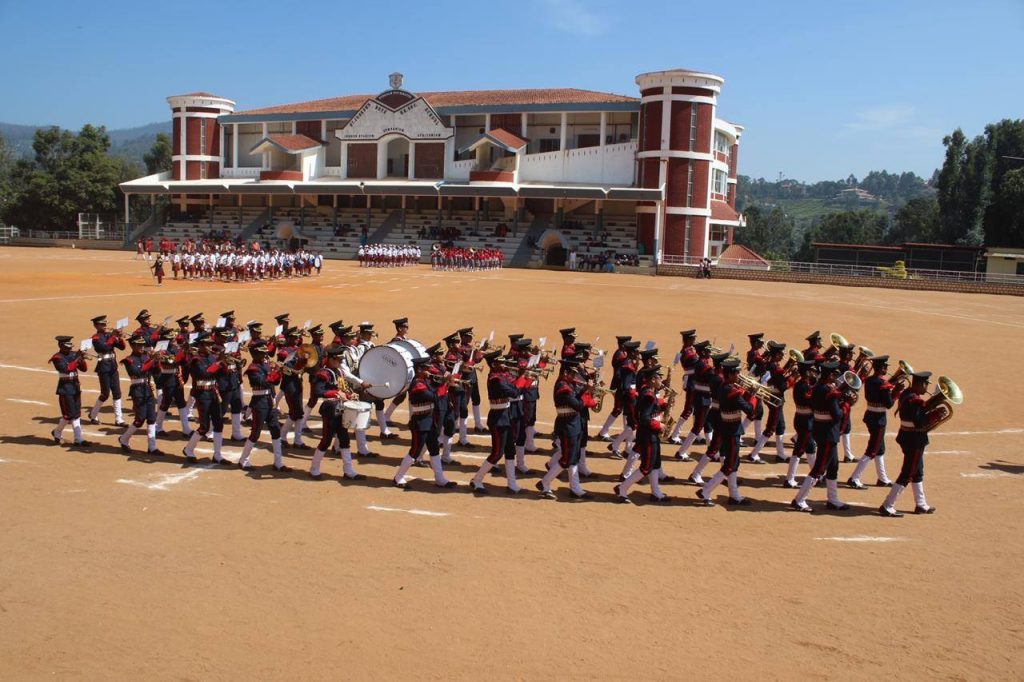
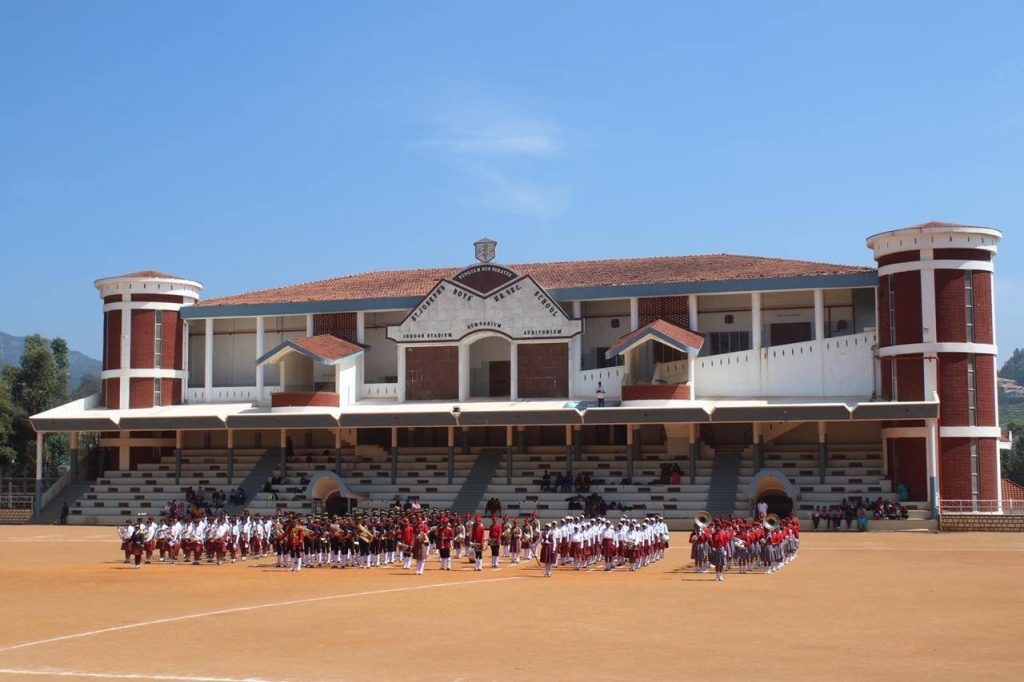
A type of climax vegetation peculiar to the Western Ghats, the shola / grassland mosaic, this mosaic plays a crucial role in the maintenance of the water cycle, retaining excess water in times of plenty, and gradually releasing the same in times of want. On the wellbeing of this huge sponge, depends not only the health of the hills, but also that of the plain country below. Realising that without the sholas, the streams of these hills would either be raging torrents of muddy water during the monsoons, or become bone-dry in summer ; the St. Joseph’s Alumni Association at Coonoor, has come up with a new initiative to conserve this fragile ecosystem, the movement, ‘Save Our Sholas ; Save Our Springs.’
As part of this initiative and to highlight the importance of these woods in water and soil conservation, a ‘Run-a-thon’ open to all categories, and a ‘Battle of the Bands’ for schools was held today at the St Josephs College. Above 400 individuals participated in the run, and five schools competed in the latter event. It is sincerely hoped that today’s occasion will be followed up by much more similar events.
Poem release
Oct 17
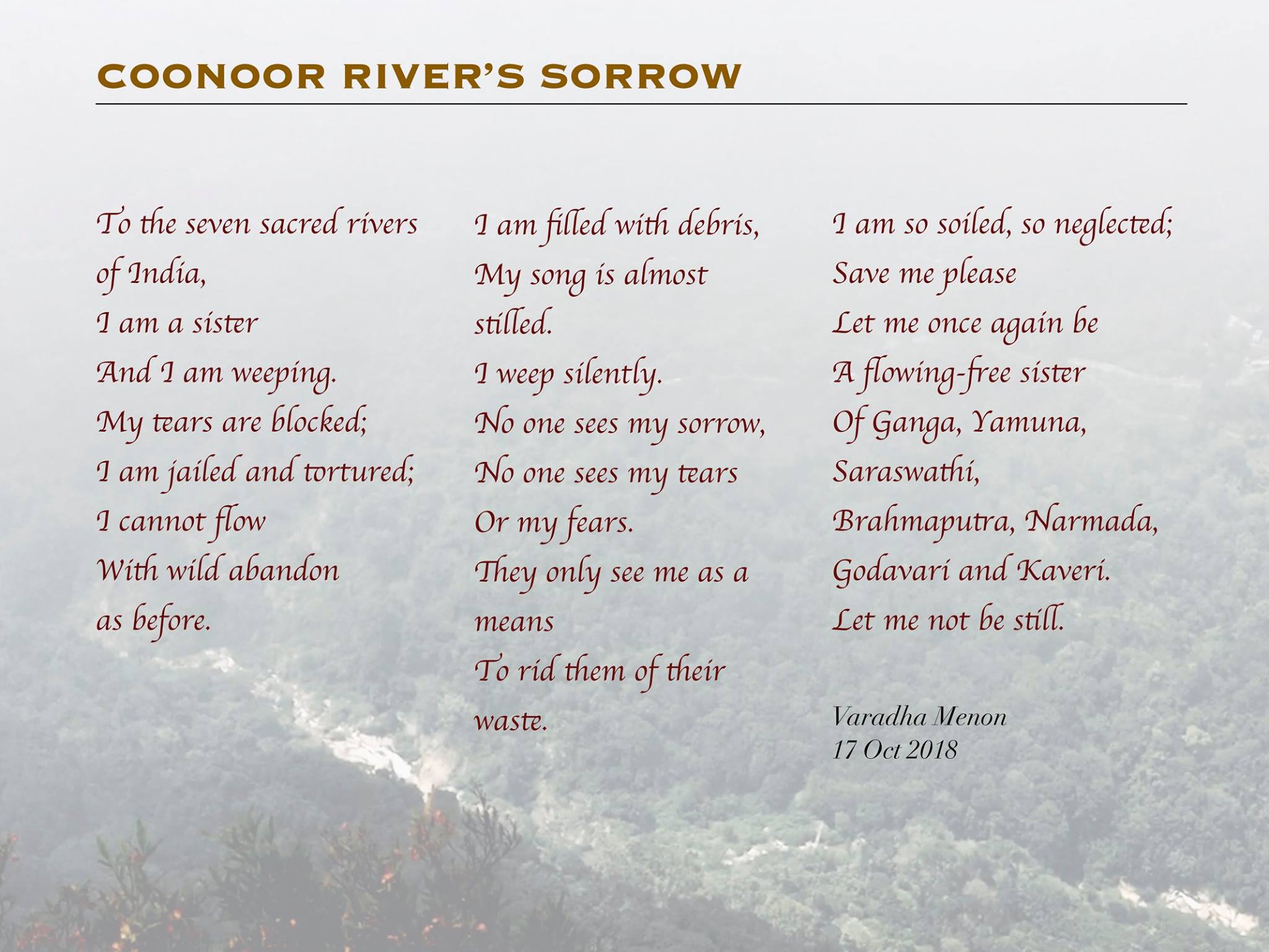
‘Coonoor River’s Sorrow,’ a lovely poem about the Coonoor River by Varadha Menon of Homedale, and perhaps the first ever such to be penned down. The lines are a gush of emotion, that effectively highlight the present-day plight of this once beautiful stream.
Gandhi Jayanthi
Oct 02
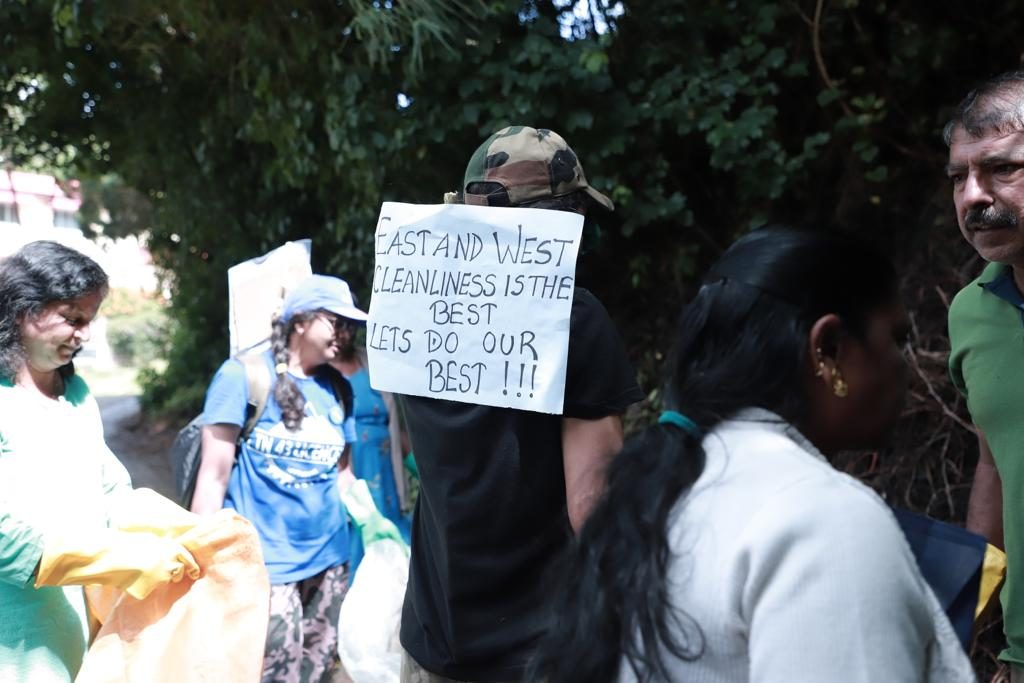
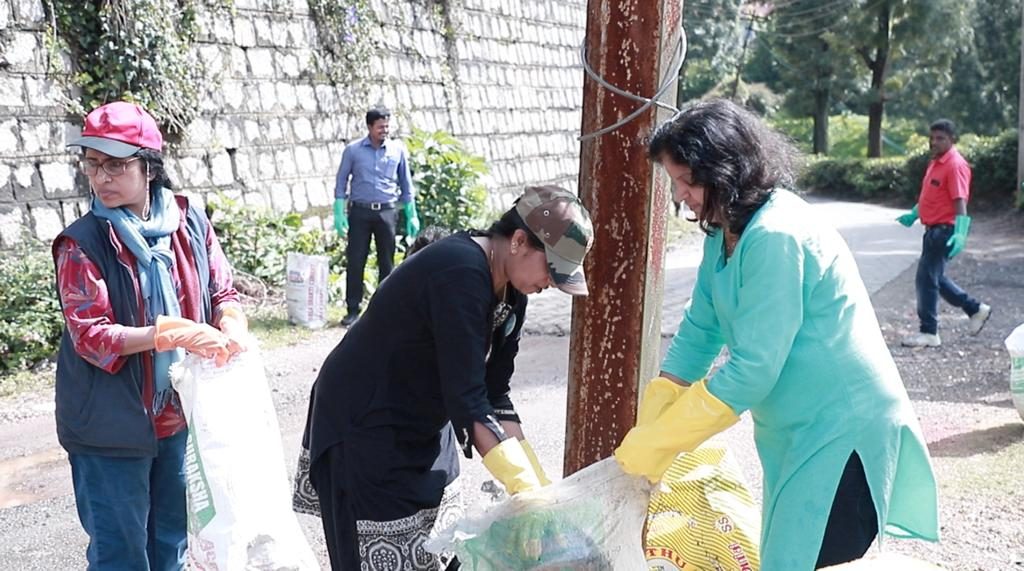
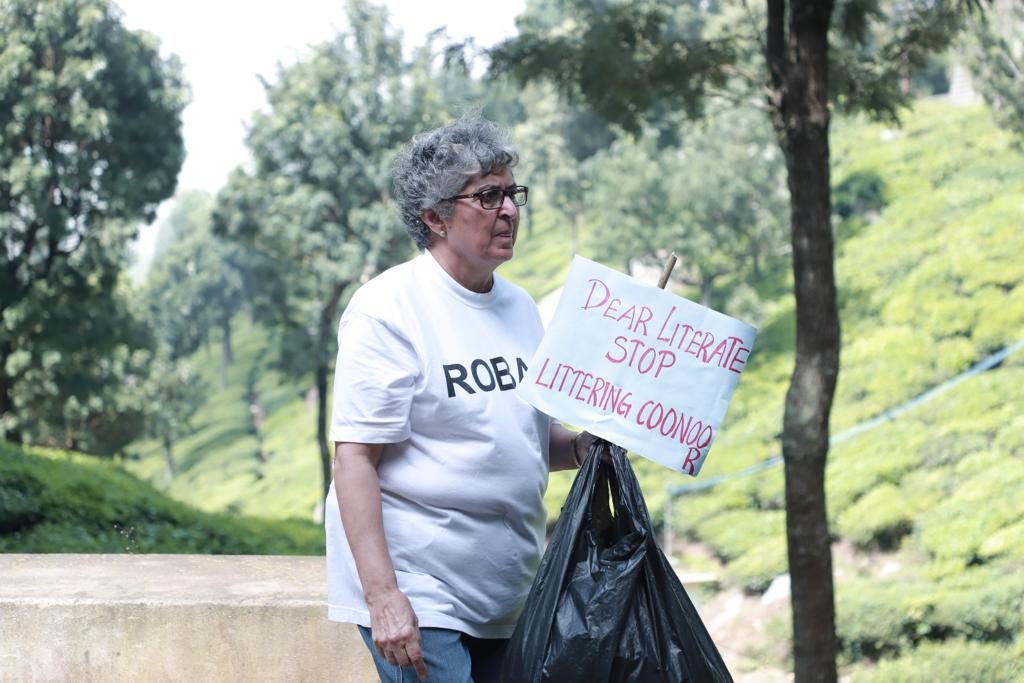
“So long as you do not take the broom and the bucket in your hand, you-cannot make your towns and cities clean,” thus quoth the father of this nation decades ago.
To honour Mahatma Gandhi’s one hundred and fiftieth birth anniversary, the Residents of Brooklands Association of Coonoor (ROBAC) along with Clean Coonoor, decided to plog down the Brooklands Road today.
Displaying placards with pithy messages, both the young and the old, with equal enthusiasm, went about picking up the litter left behind by the careless and the callous, and soon the area was clear of trash.
World Rivers Day
Sep 30
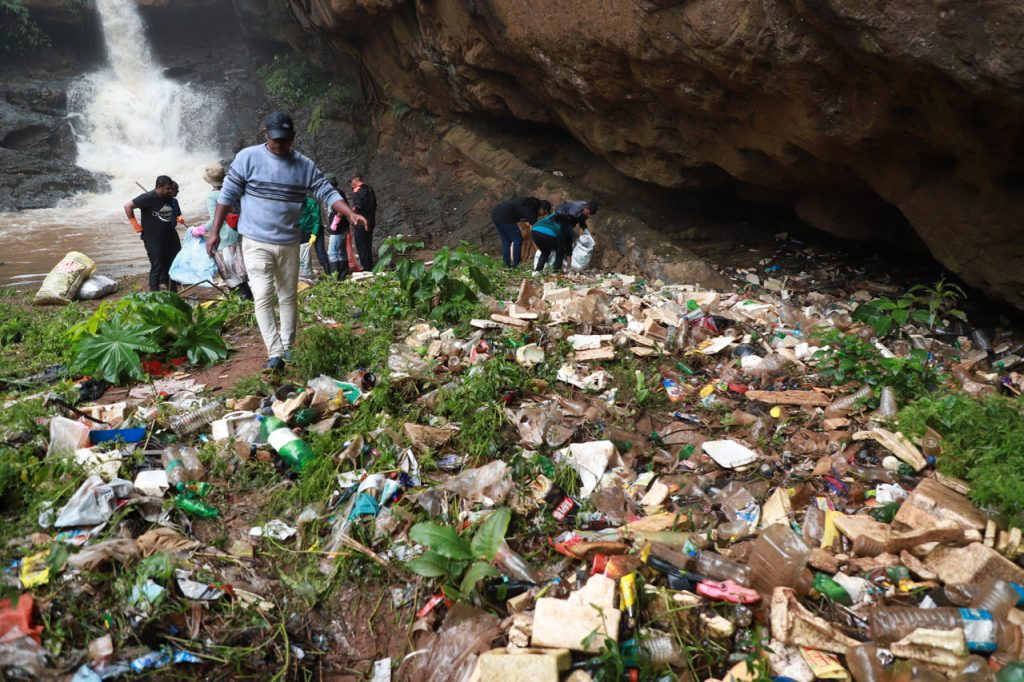
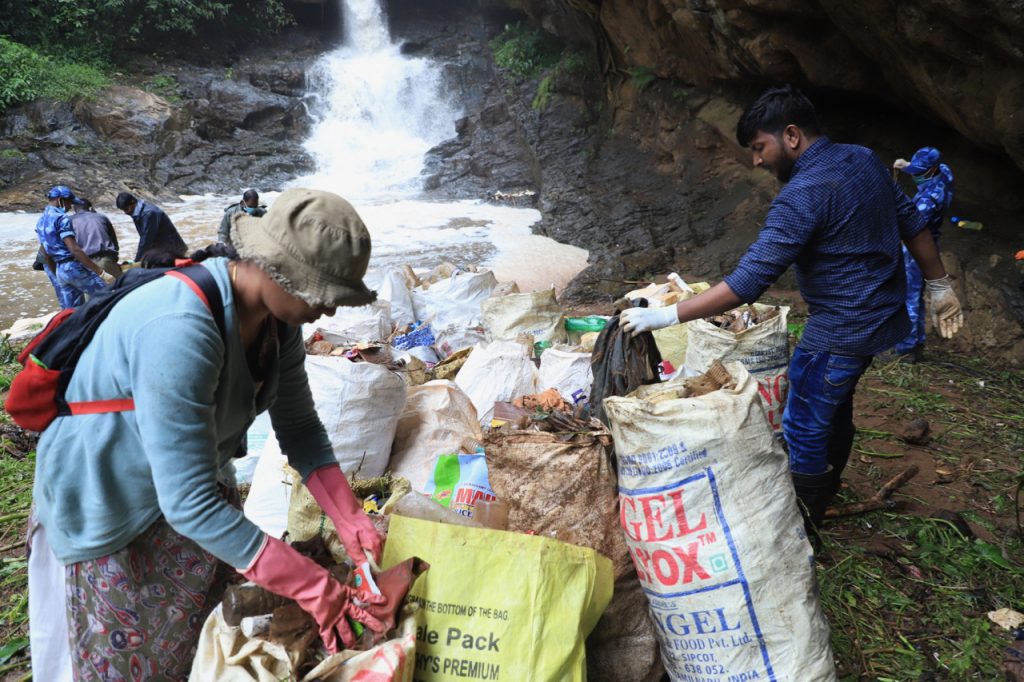
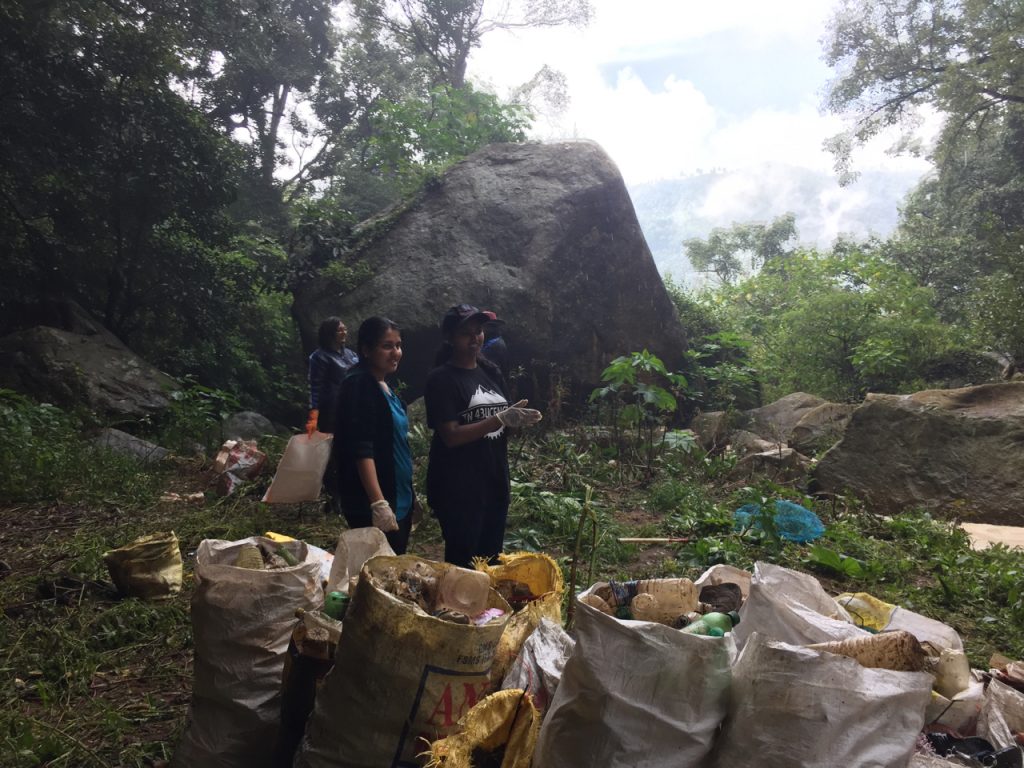
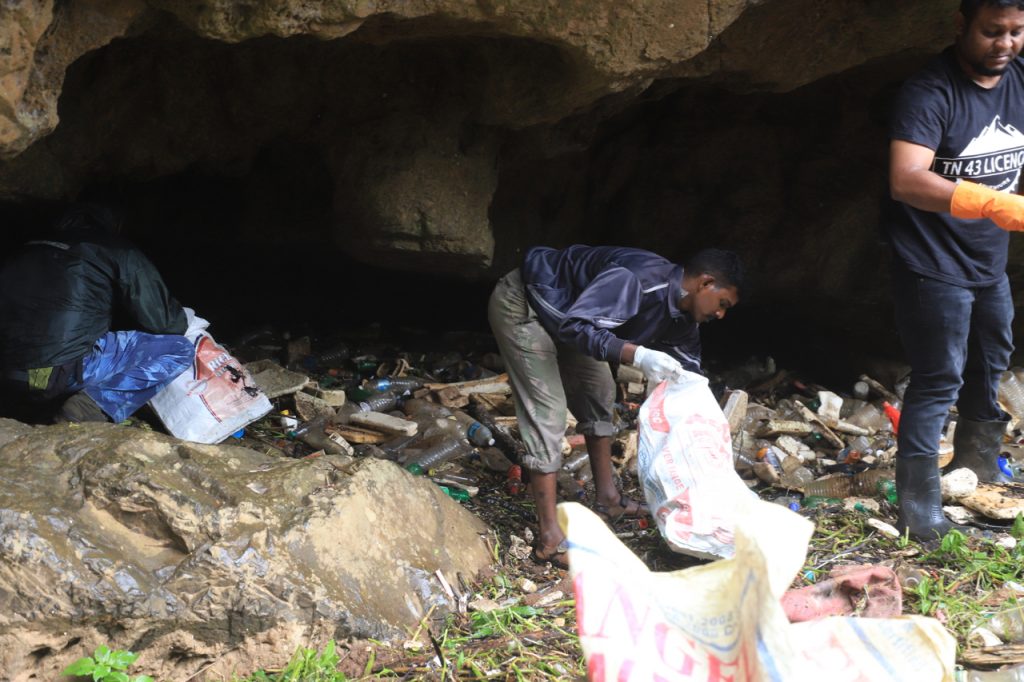
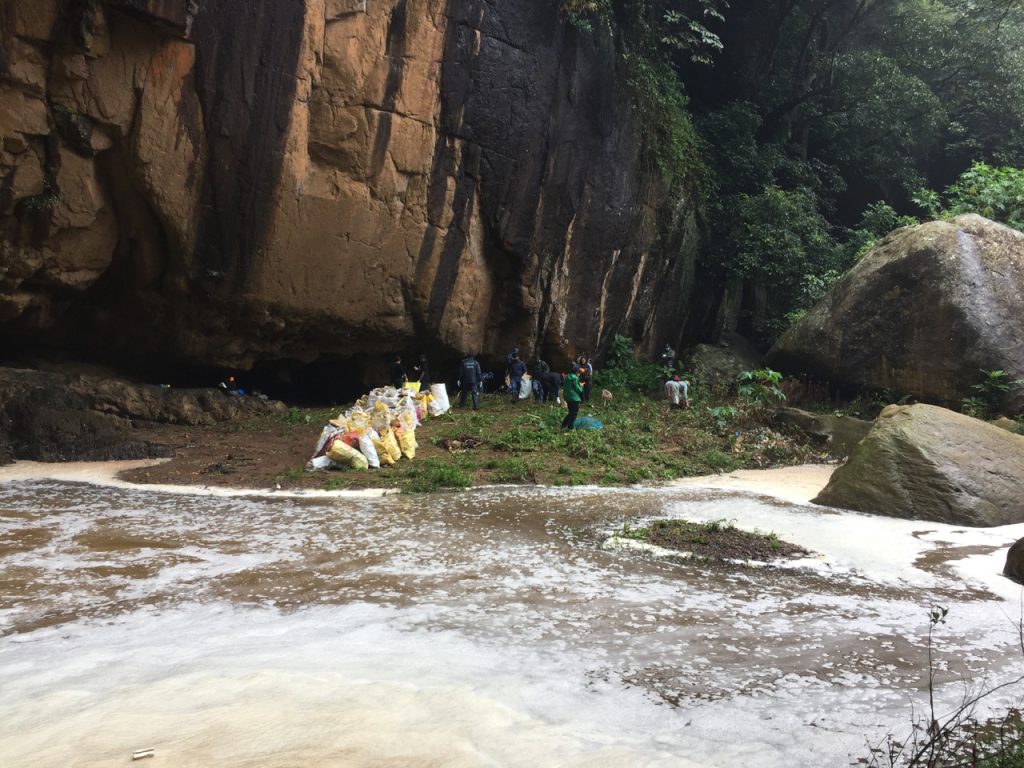
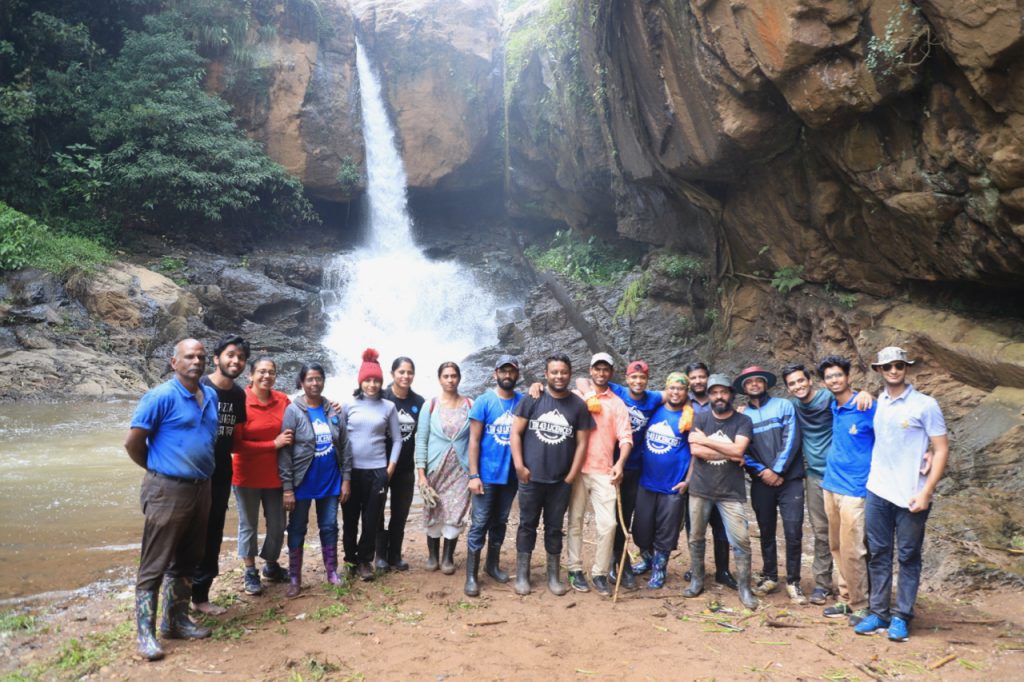
Nearly a ton and a half of plastics, rags and other miscellaneous waste, were collected in the cleanup drive organised by ‘Clean Coonoor’ to mark World Rivers Day. They were either fished out from within, or picked up from the banks, along the 50 metre stretch of water which forms a small pool at the bottom of the Law’s Fall.
If such as small region could yield such a quantity of trash, the question that arises next is, what would be the amount of litter cluttering the entire course of the river and its feeders. It sure ‘puzzles the will,’ and maybe, it could be a million tons or even more.
Nearly a quarter of the garbage collected seems to have been generated in the municipal market upstream ; polystyrene containers, woven polymer bags, plastic packaging material and such. The rest were plain household trash, and litter which had been washed in the surface runoff. Water and soft drink bottles topped the list, followed by old clothing and other linen, plastic wraps of all description, milk sachets, plastic toys, and etcetera.
The theory that why bother to clean up at all, as the accumulated garbage is bound to be washed away in the next downpour doesn’t hold water. Some of the milk sachets collected were either manufactured a decade ago, or during such a time when milk was being sold at Rupees Sixteen a litre.
This cleanup was organised to serve as an eye-opener, perhaps it will draw the attention of the public and the administration to the fact that the river is slowly getting clogged up, and in due course of time, would open up new channels which may prove disastrous.
Release of documentary, ‘The Coonoor River’
Sep 29
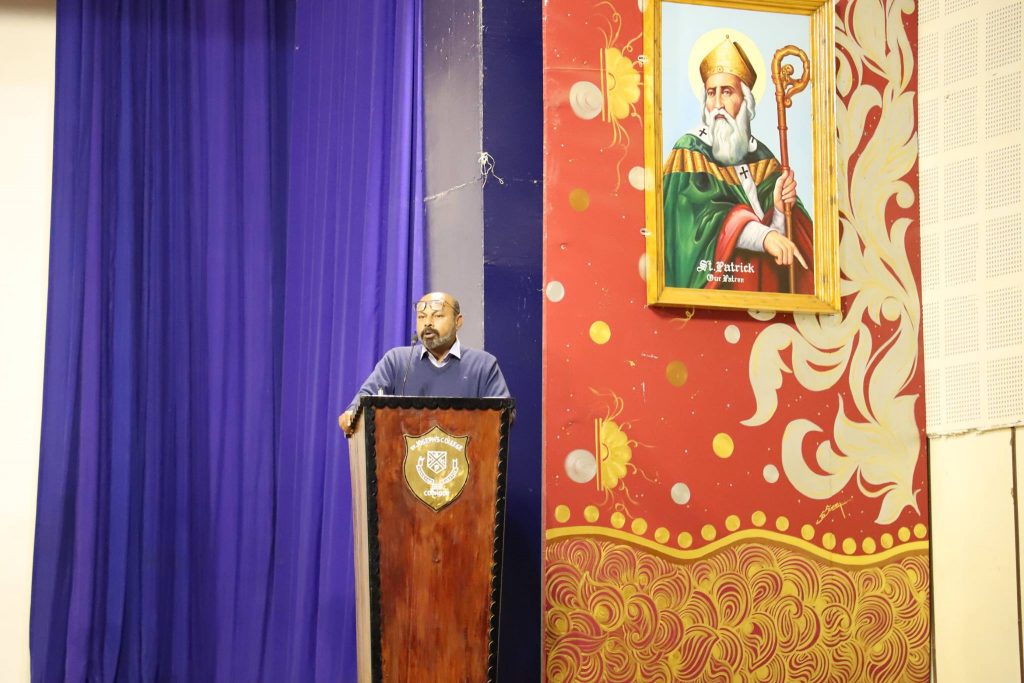

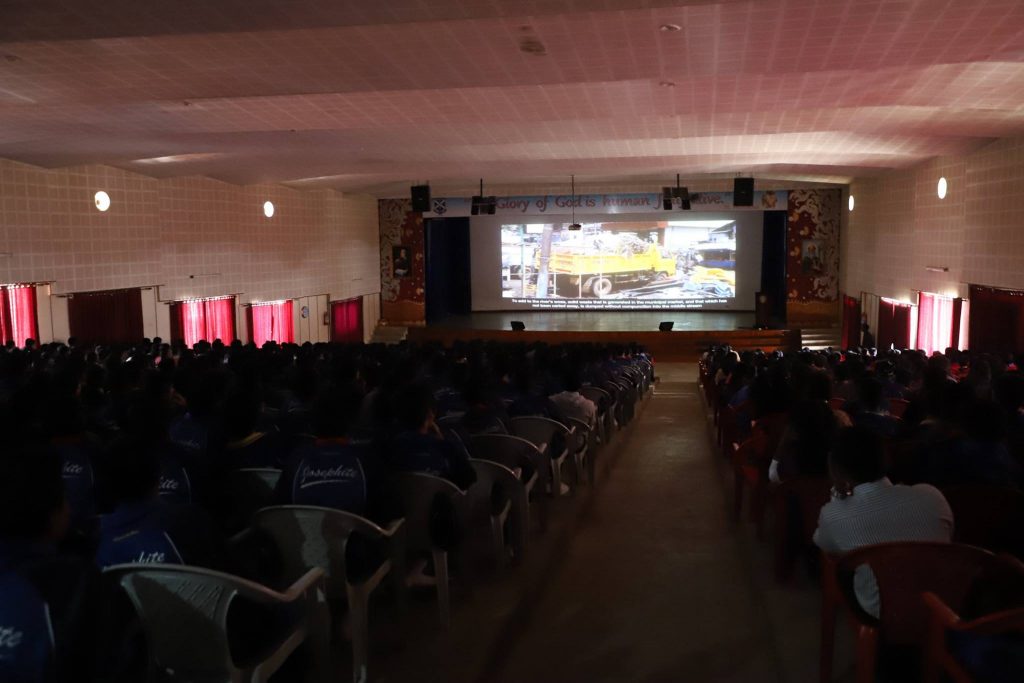
As a prelude to its World Rivers Day activities, Clean Coonoor launched a short documentary on the Coonoor River. The documentary delves into the reasons for the river’s present-day sullied state, and also explores the possibilities of saving it from a slow death.
The event was held at the St Joseph’s College at Coonoor where the film was screened for the benefit of the students. The Principal Reverend Fr. Naveen Francis presided over the proceedings in which the Alumni Association as well took part.
World Tourism Day
Sep 27
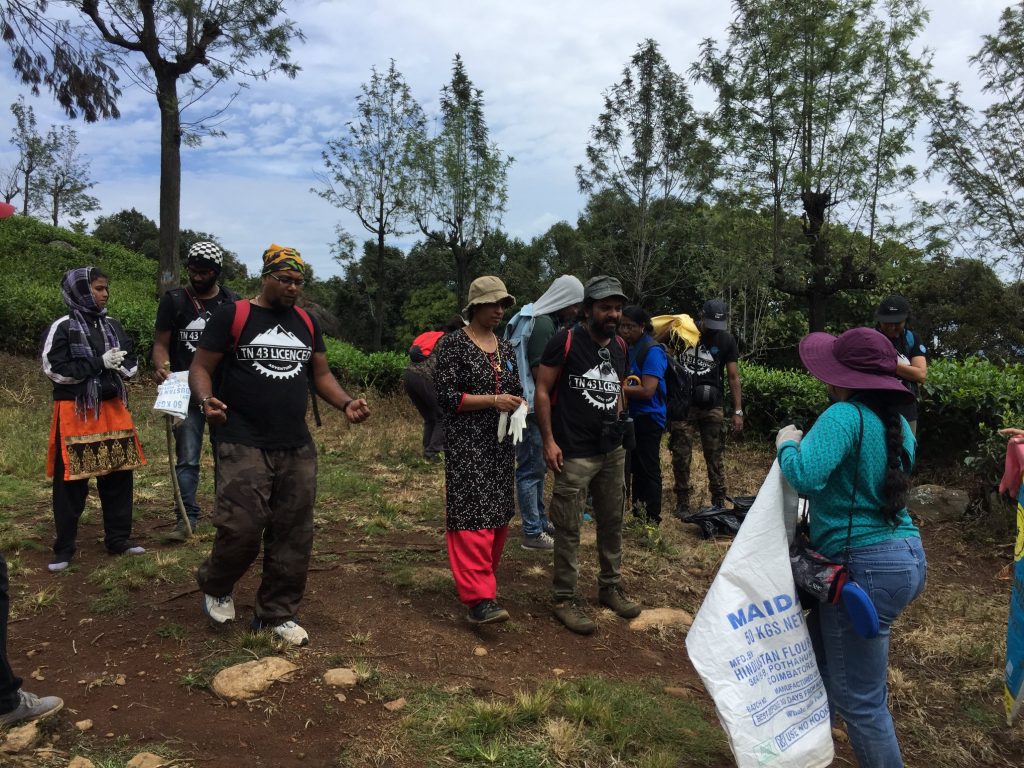
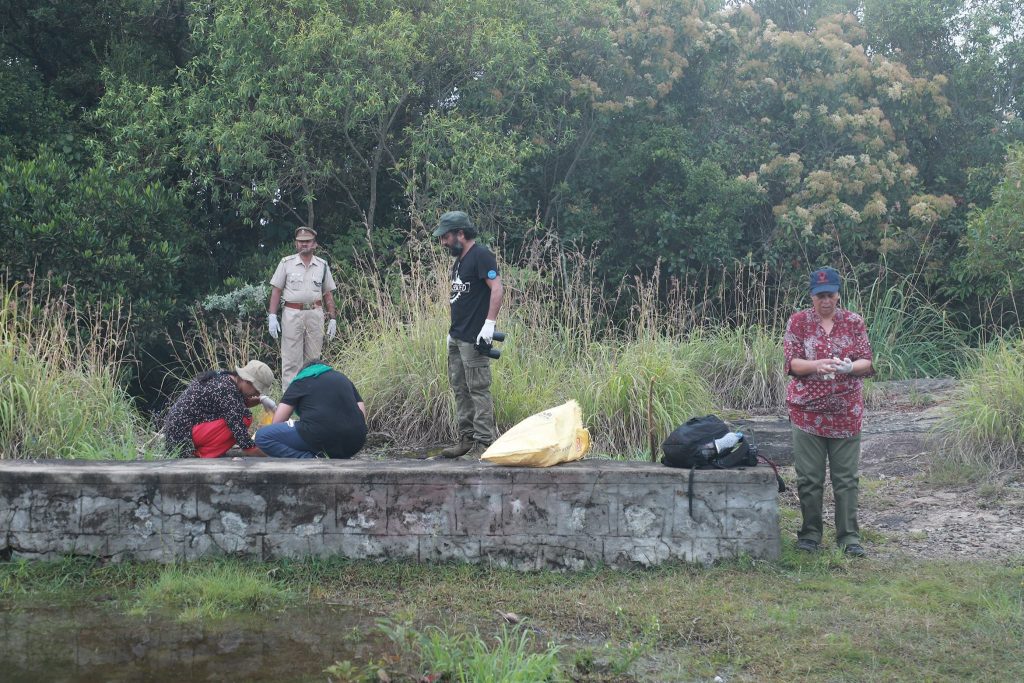
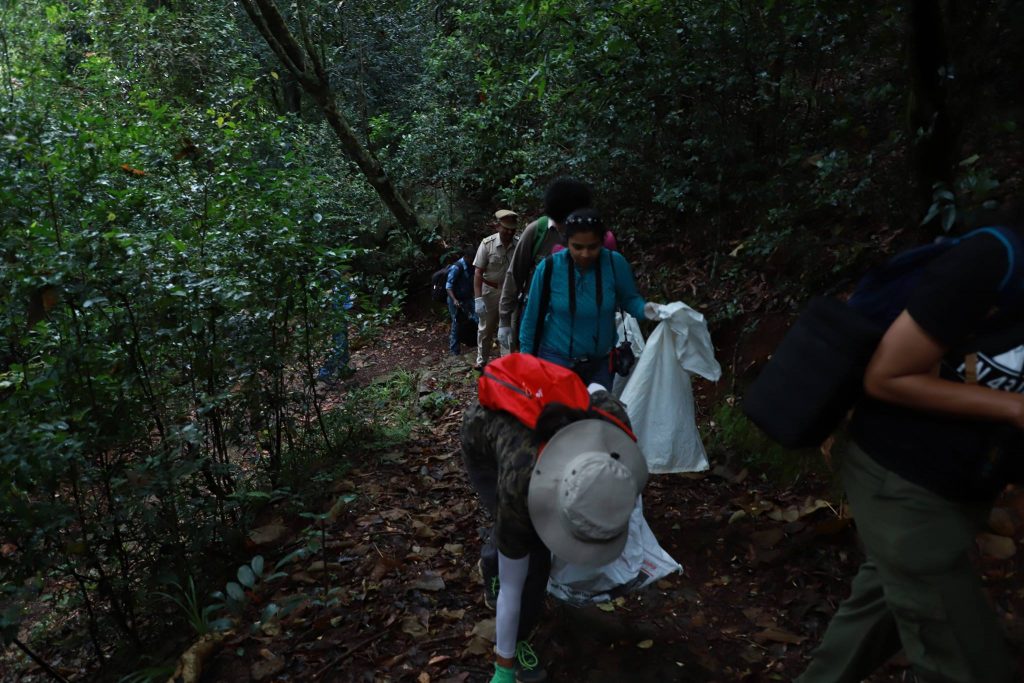
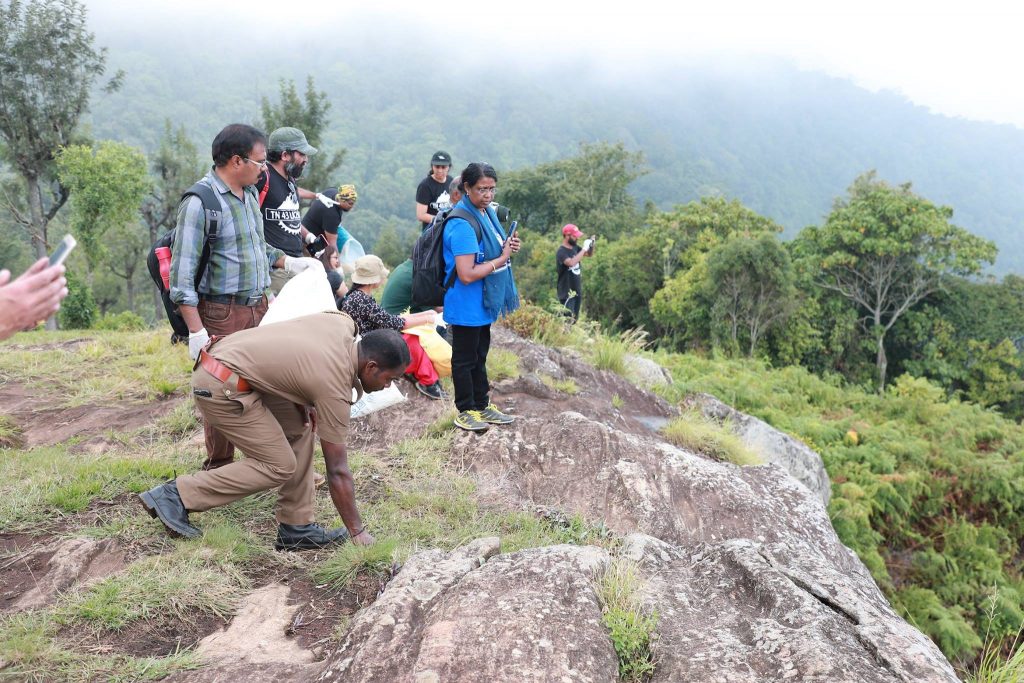
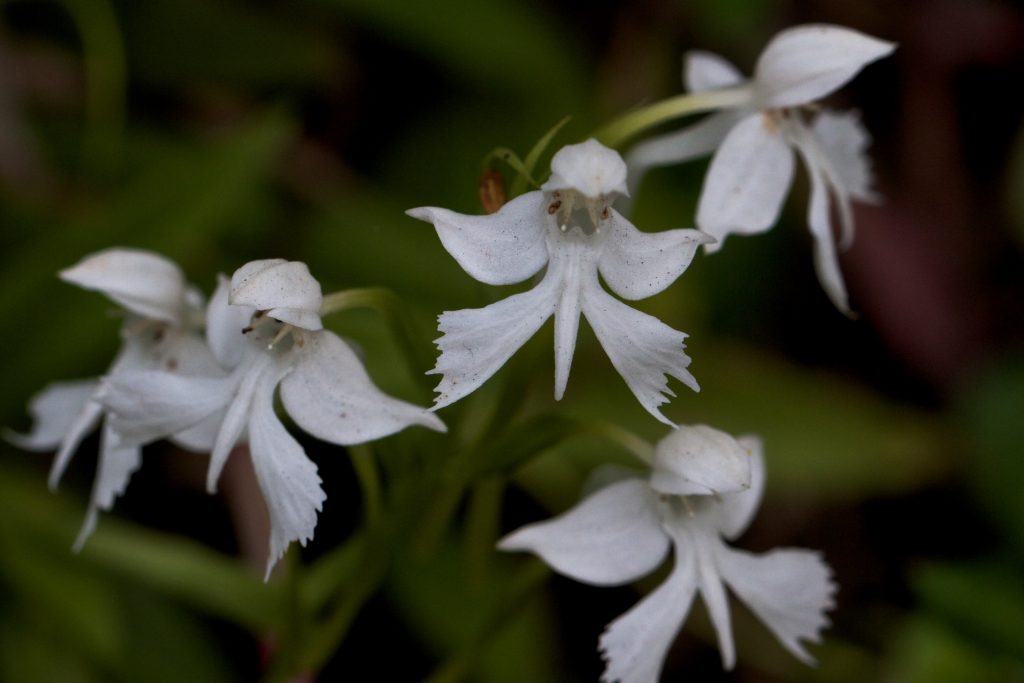
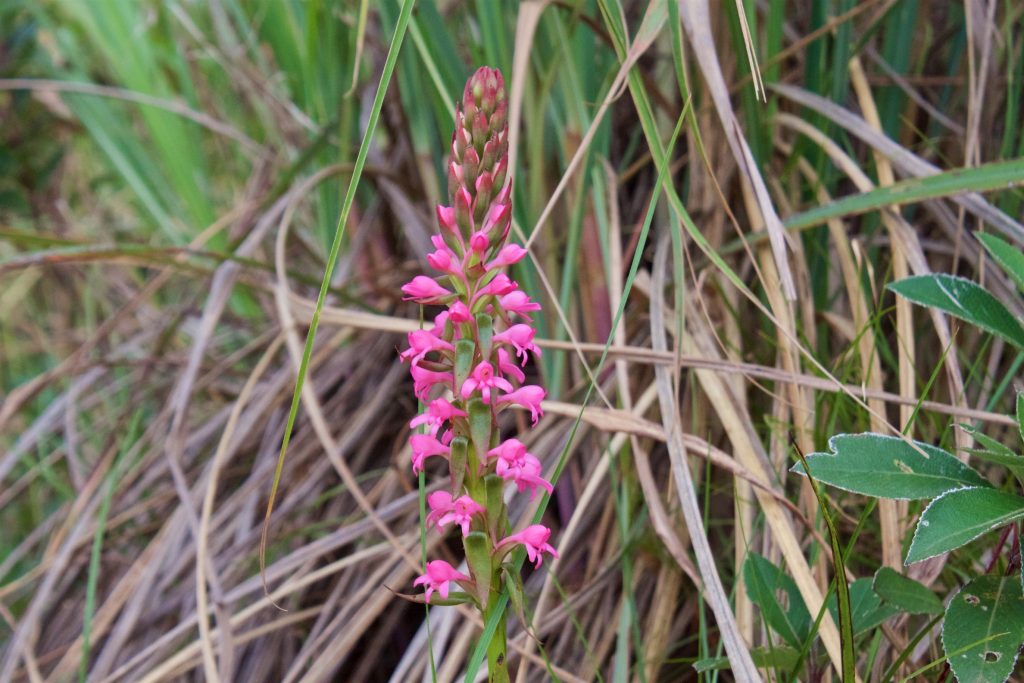
To mark World Tourism Day, ‘Clean Coonoor’ along with the forest department organised a clean up at Droog, the earliest of all picnic spots near Coonoor. Having ignored the sine qua non of all Nilgiri excursions, a clear cloudless sky ; the magnificent view which this place is famous for was not to be had. But this was partly compensated by the sight of habenarias, twin-spur orchids, senicios and strobilanthes in full bloom ; the green grassy ground broken up with patches of white, pink, yellow and lilac blue.
Unlike other picnic spots there was very little trash, for fortunately Droog lies off the beaten track and out of reach of the ordinary rubberneck tourist with his motorcar and motorbus and his invariable litter. Another reason is the vigilance of the forest department personal who do not to let in persons without a valid permit.
Perhaps the lesson to be learnt here is, that what present-day Nilgiris which faces the adverse ecological, cultural and economic impacts of mass tourism needs, is regulated and responsible tourism.
The Heritage of Coonoor through Early Photographs
Sep 14
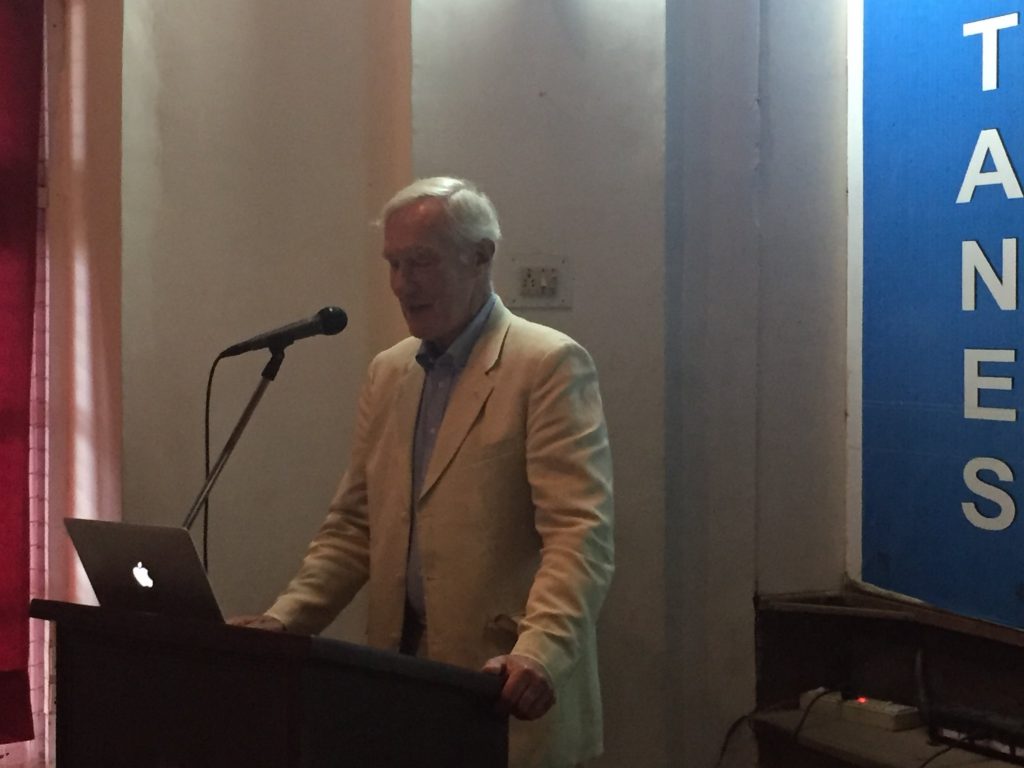
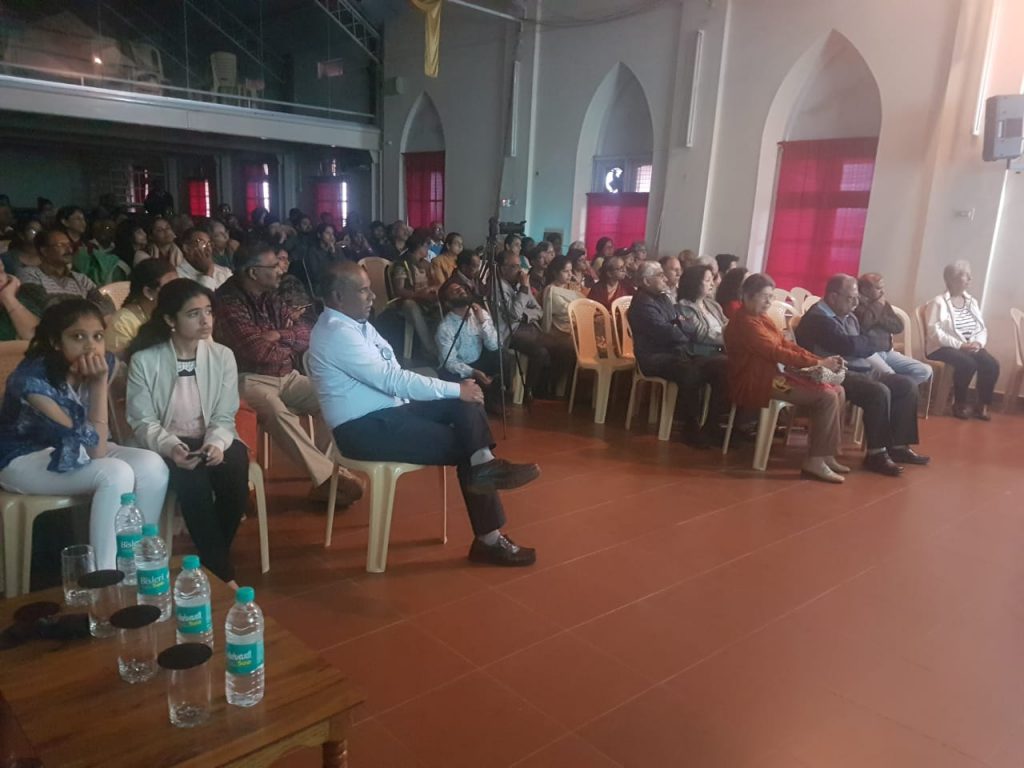
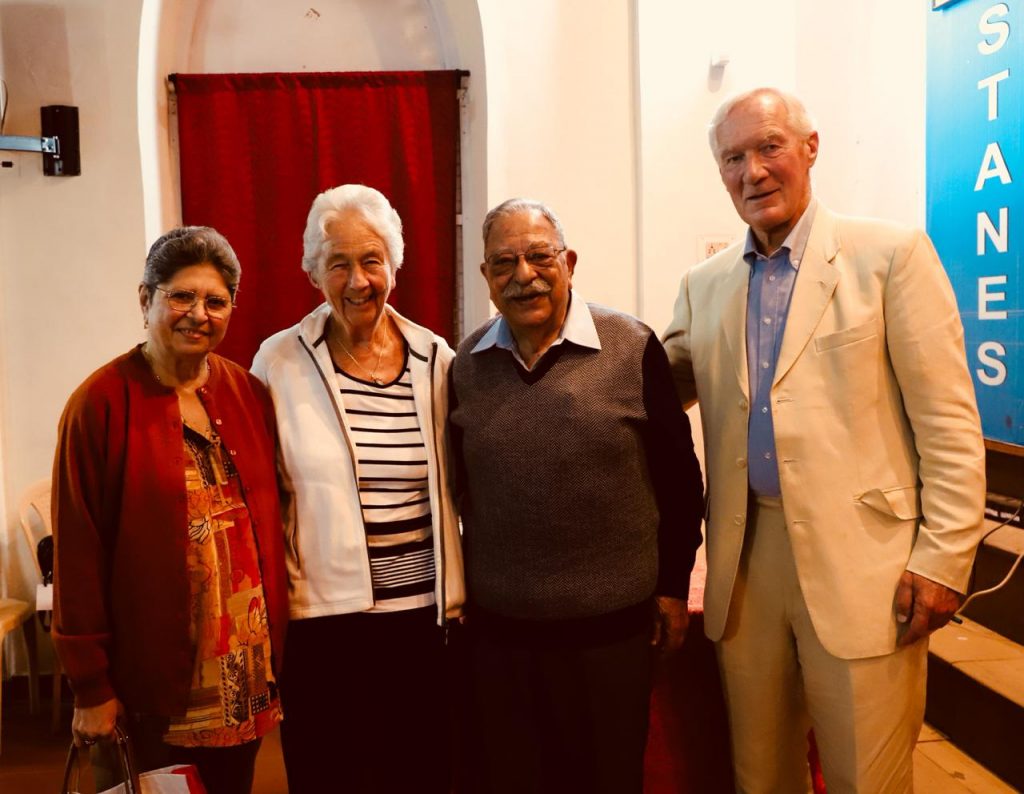
“People will not look forward to posterity who never look backward to their ancestors,” quoth Edmund Burke, the eighteenth century author, orator, political theorist and philosopher.
The truth behind this remark was none so well demonstrated, than during the discourse given here today, about the heritage of Coonoor through the photographs of Albert Thomas Watson Penn, pioneering photographer of the Nilgiris.
Read More
It appears that all that mattered to Christopher Penn who delivered the talk, was to write the name of his great granddad indelibly on the scroll of time, a filial affection which is hard to come by in these degenerate days.
His own researches which he had started way back in 2002, and which had lead to the publication of three books, he nonchalantly brushed aside. Neither the hours he had plugged away at the British Library going through rolls and rolls of microfilm, nor the efforts he had taken of reconstructing a past entirely through clues left behind in print, seemed to count much to him.
It is true that Coonoor and the Nilgiris generally owe a greater debt to Mr. A. T. W. Penn’s talent than perhaps they realise, for the many pictures of gentle downland or forbidding height ; enchanting wildwood or barren waste; purling stream or mighty cataract ; jungled hill or far-flung ranges, paint a picture which is much different from what is seen today.
But, it is also true, that, if A. T. W. Penn’s ‘work endureth better’ than what he would have ever imagined in his lifetime ; it is solely through the efforts of his great grandson Christopher Penn and his painstaking pursuit of the past.
A. T. W. Penn is also know to have trained a few Indians as photographers, and among them was Mr. Dinshaw Hazary of Ootacamund whose great grand nephew Mr. Dhunjeebuoy is now a longtime resident of Coonoor. A rare moment was, when the great grandson of A. T. W. Penn, and the great grand nephew of Dinshaw Hazary met.
Church of All Saints
Sep 03
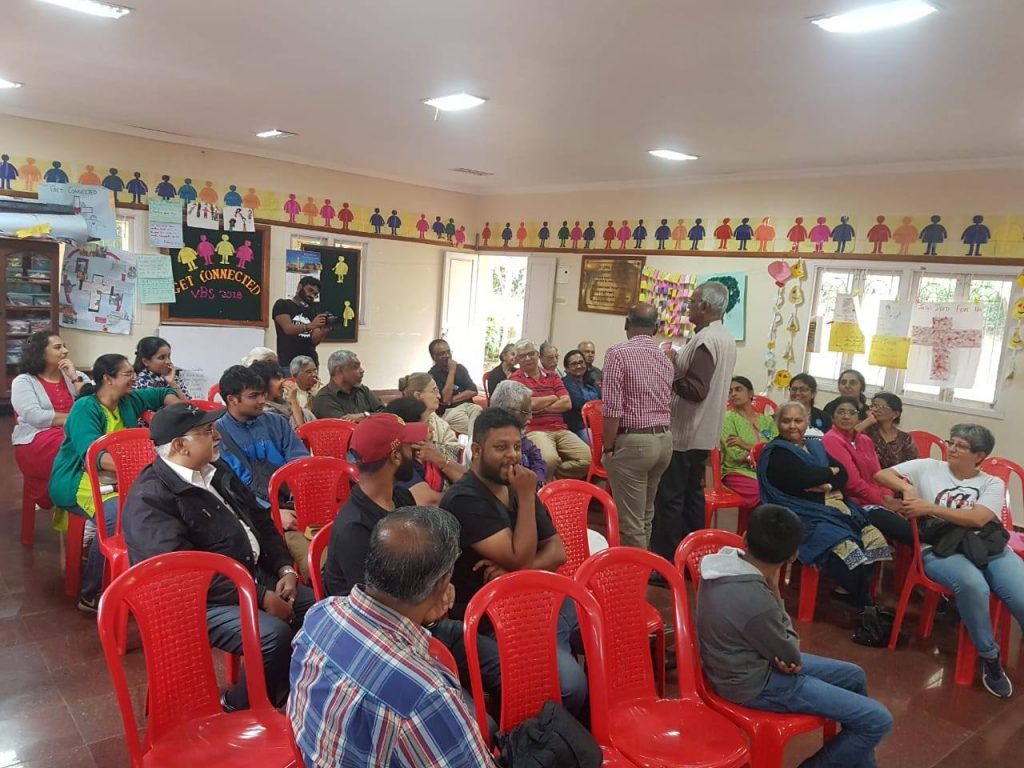
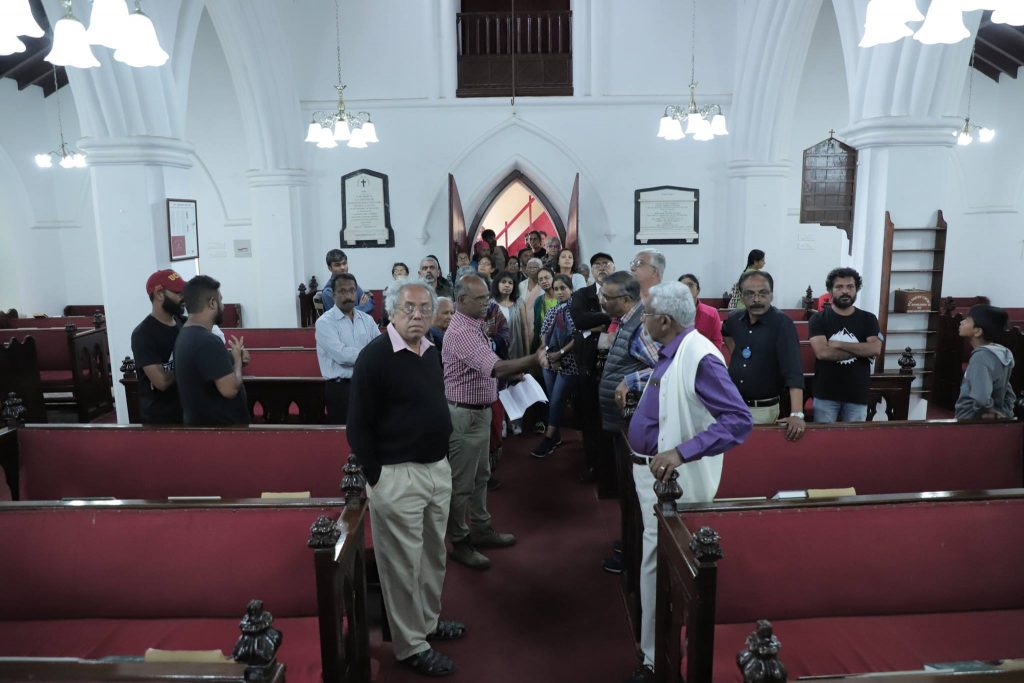
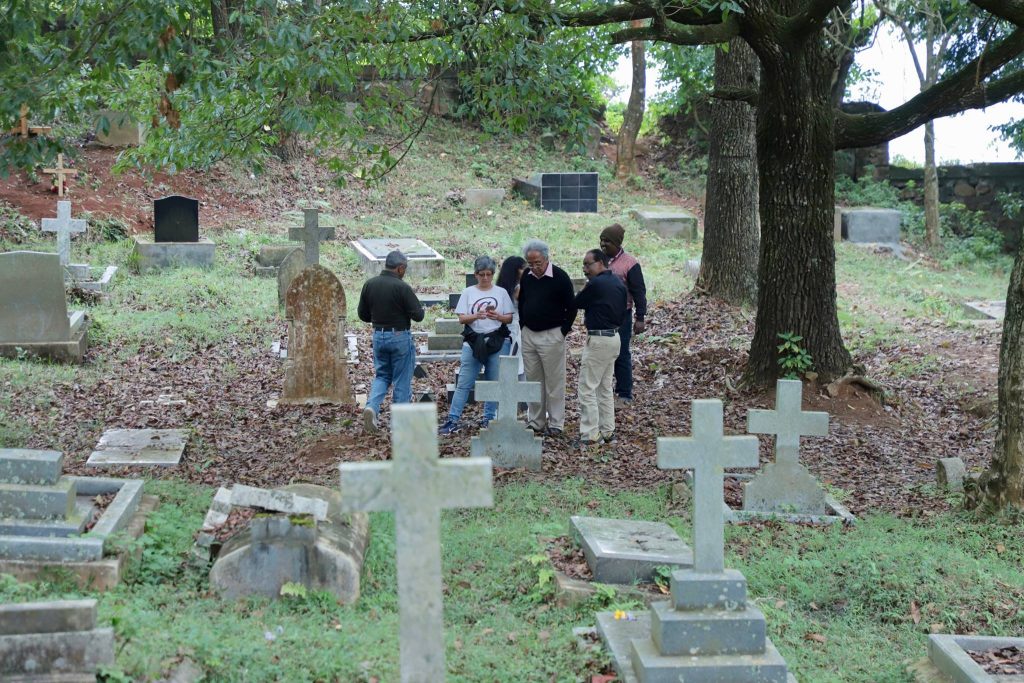
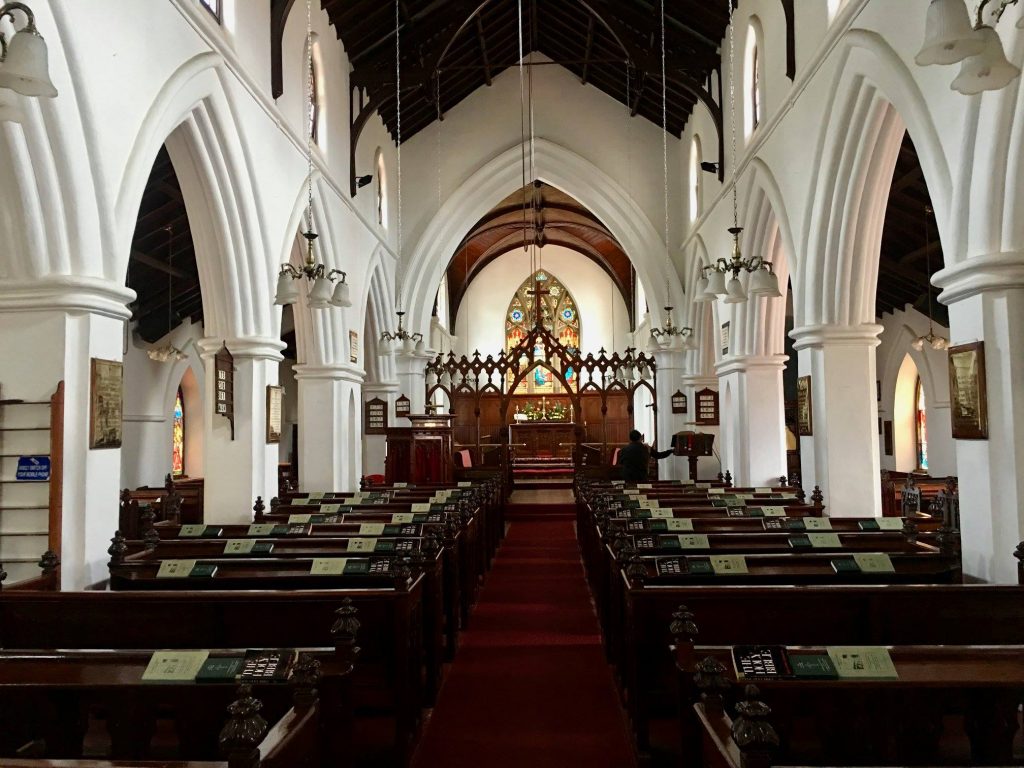
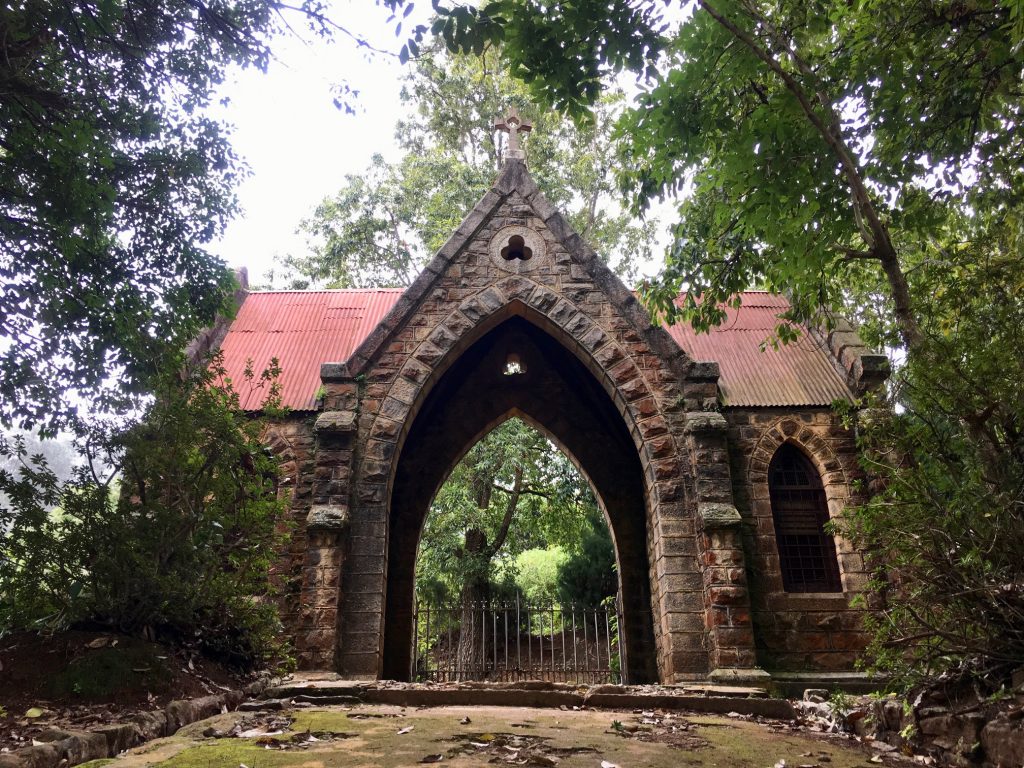
This day in 1851 marks the occasion on which the cornerstone of the first church in Coonoor was laid. To commemorate this anniversary, a small heritage walk from the church dedicated to ‘All Saints’ to the cemetery at Tiger’s Hill was held this Sunday afternoon, in which around 40 individuals from all faiths participated.
Clean Coonoor offers its sincere thanks to the Presbyter-in-charge, Reverend Rodriguez Barnabas, and the members of the Church Committee, for their cooperation extended ; and a special thanks to the eminent historian Reverend Philip K. Mulley, for having spared his time in order to share his knowledge.
Flood Relief 2018
Aug 21
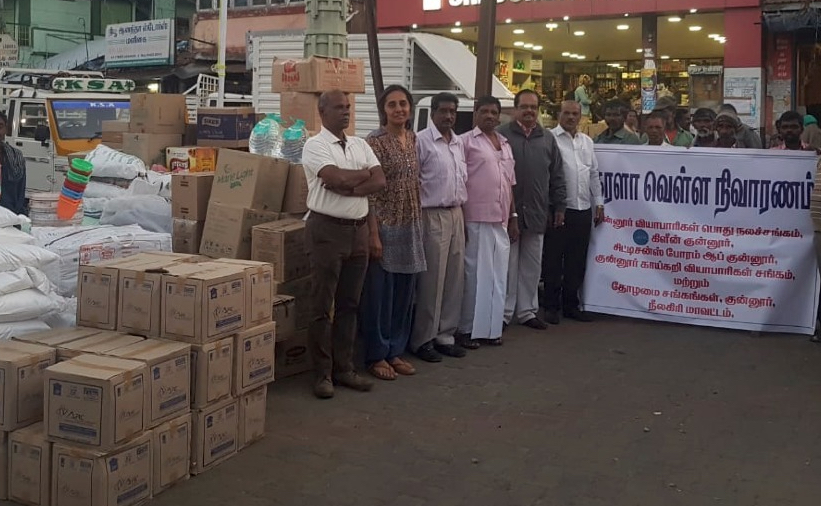
Relief material collected for victims of flood ravaged Kerala State despatched
NMR Plogging
Aug 16
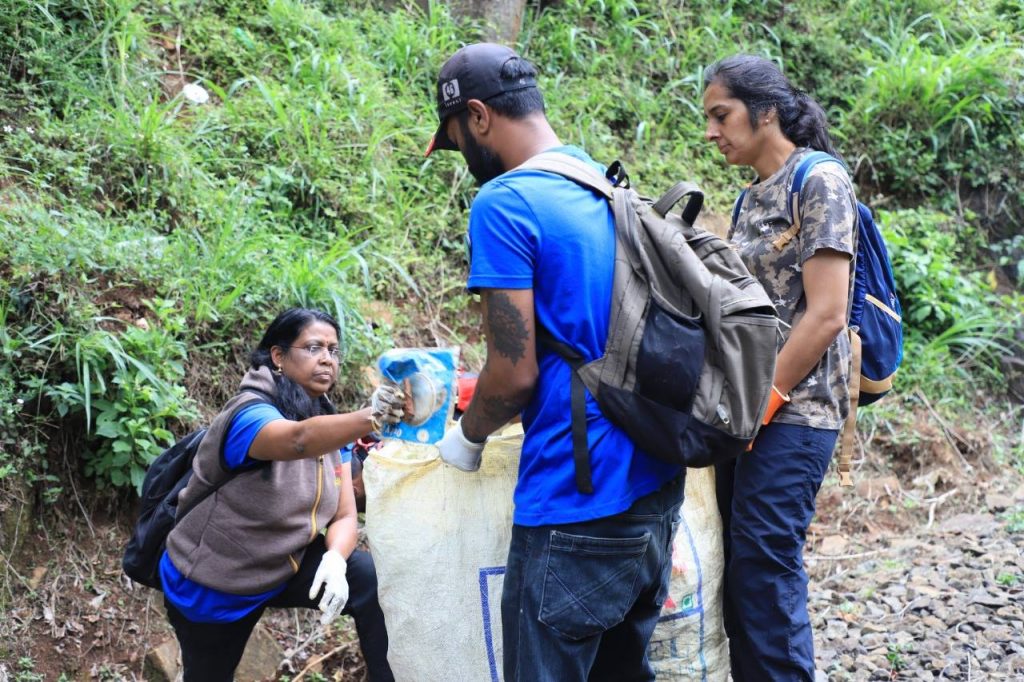
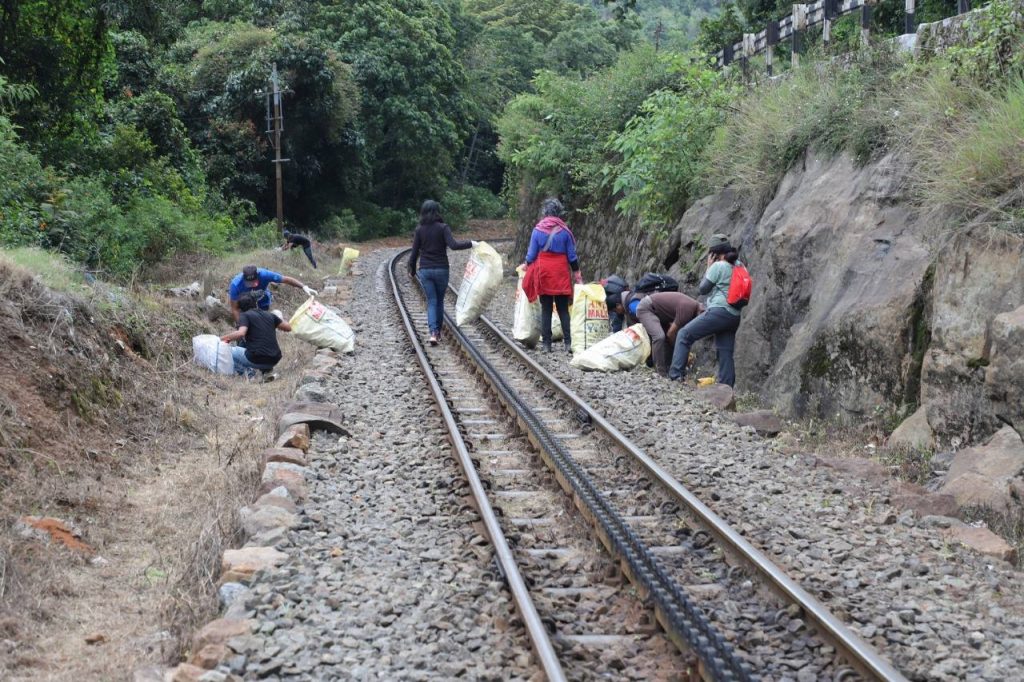
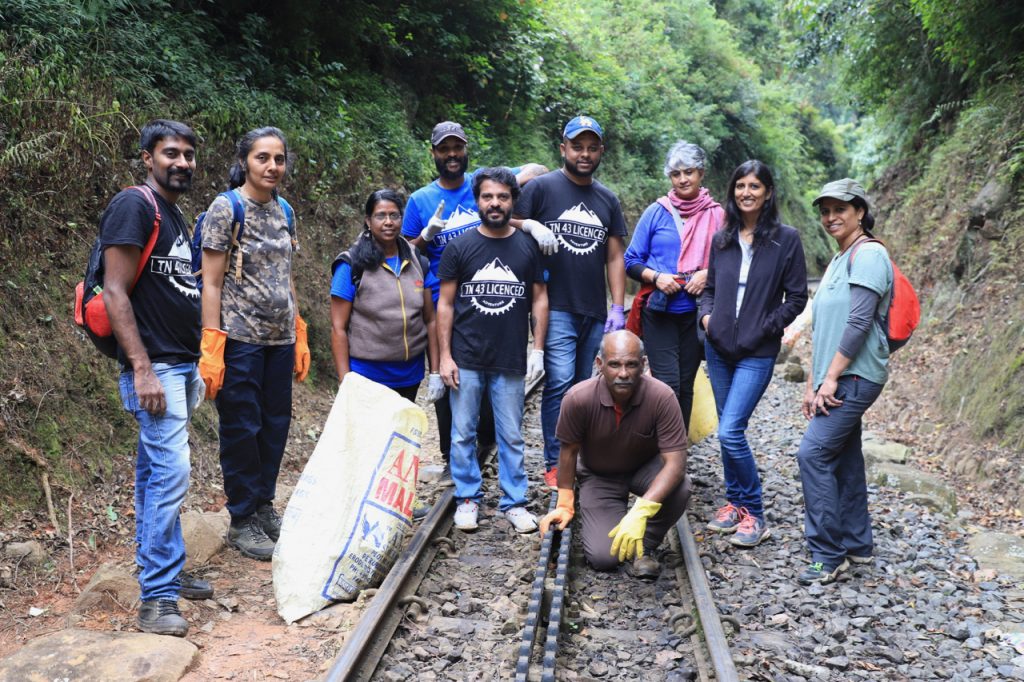
Heritage cum nature walk and plogging held along the NMR Line from Coonoor to Runnymede, to commemorate the day when Coonoor Railway Station was graced with a viceregal visit.
Heritage Walk – Sim’s Park
Aug 05

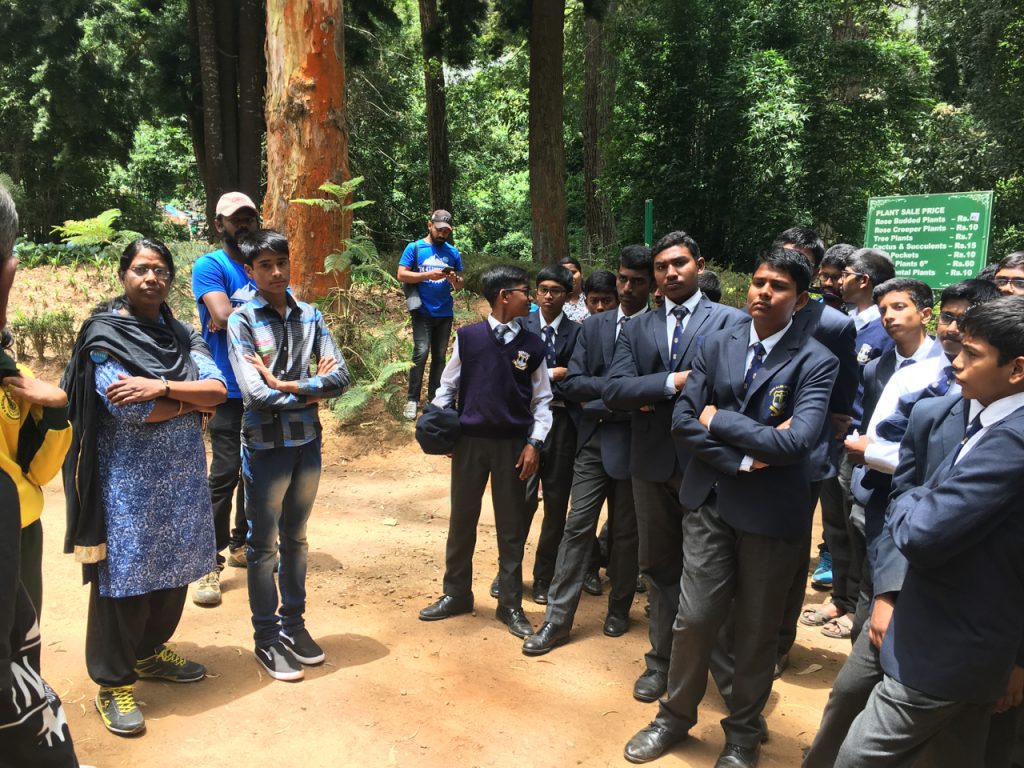
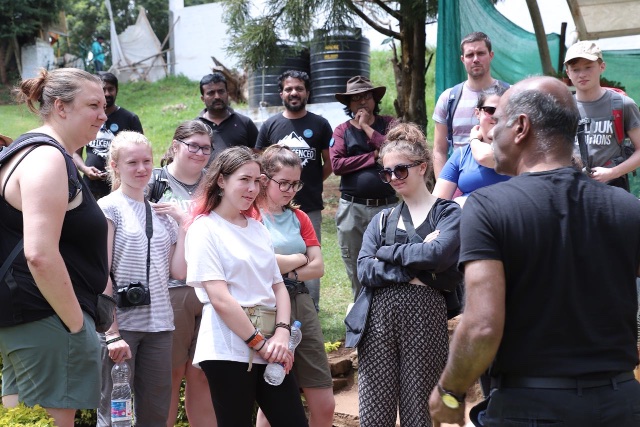
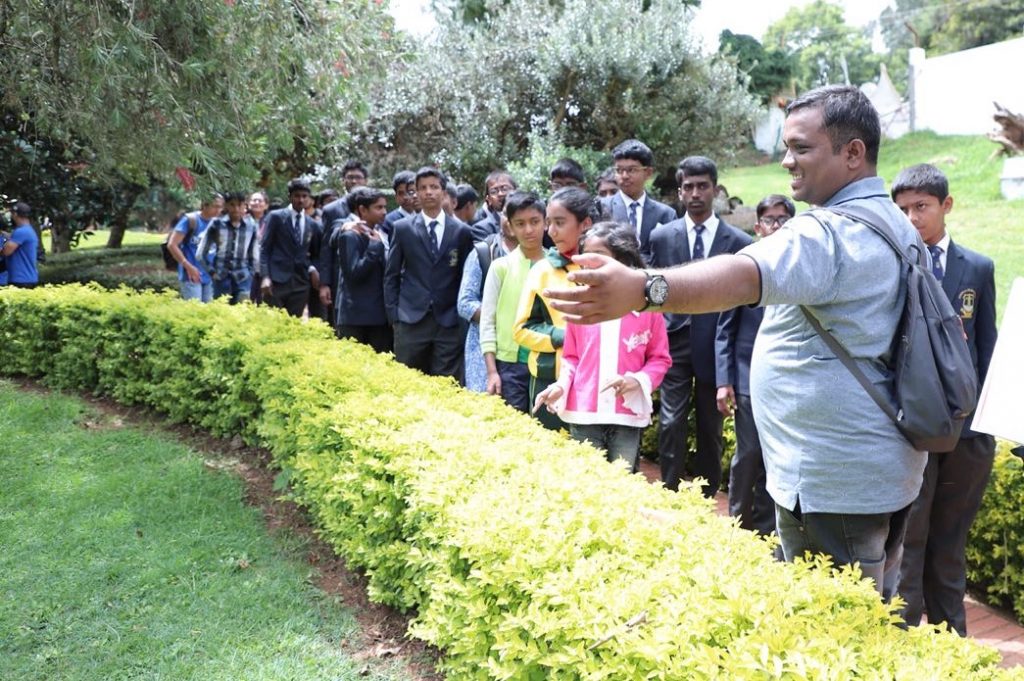
Sesquicentennial death anniversary of Stephen Rumbold Lushington, Governor of Madras who was instrumental in opening the Coonoor Ghat observed by holding a heritage walk in Sim’s Park for children of Stanes Higher Secondary School and a few tourists.
NMR Day
Jun 15
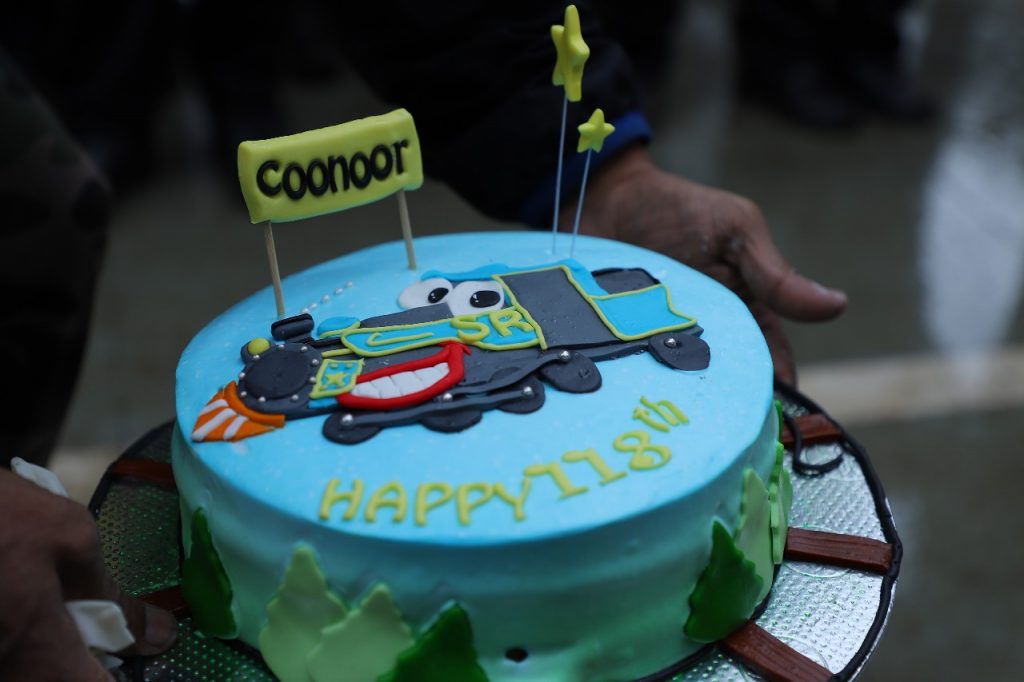
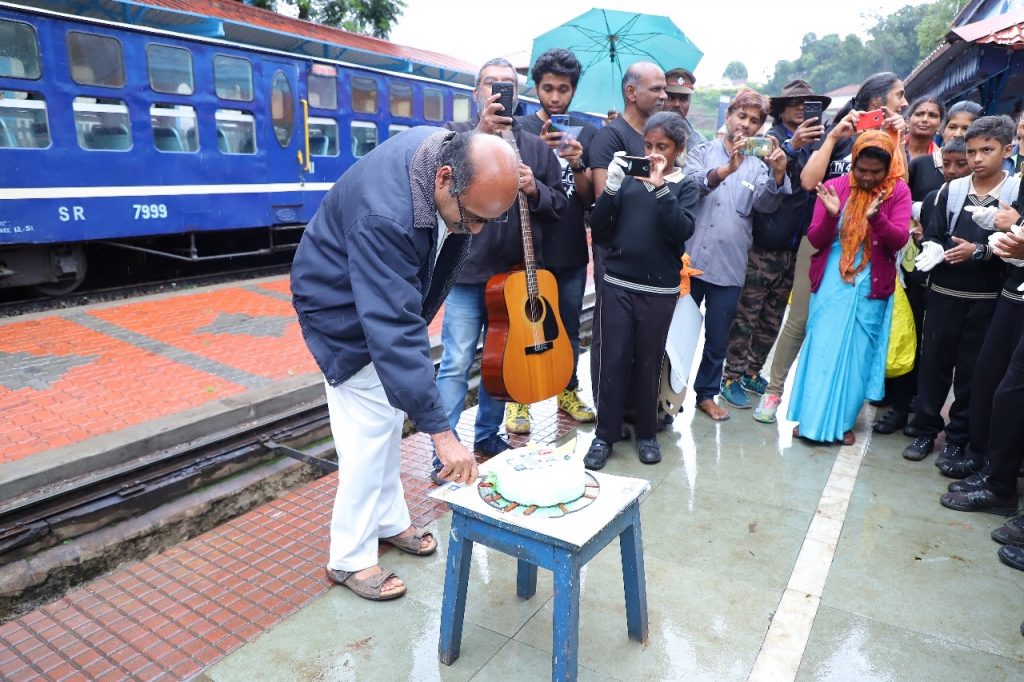

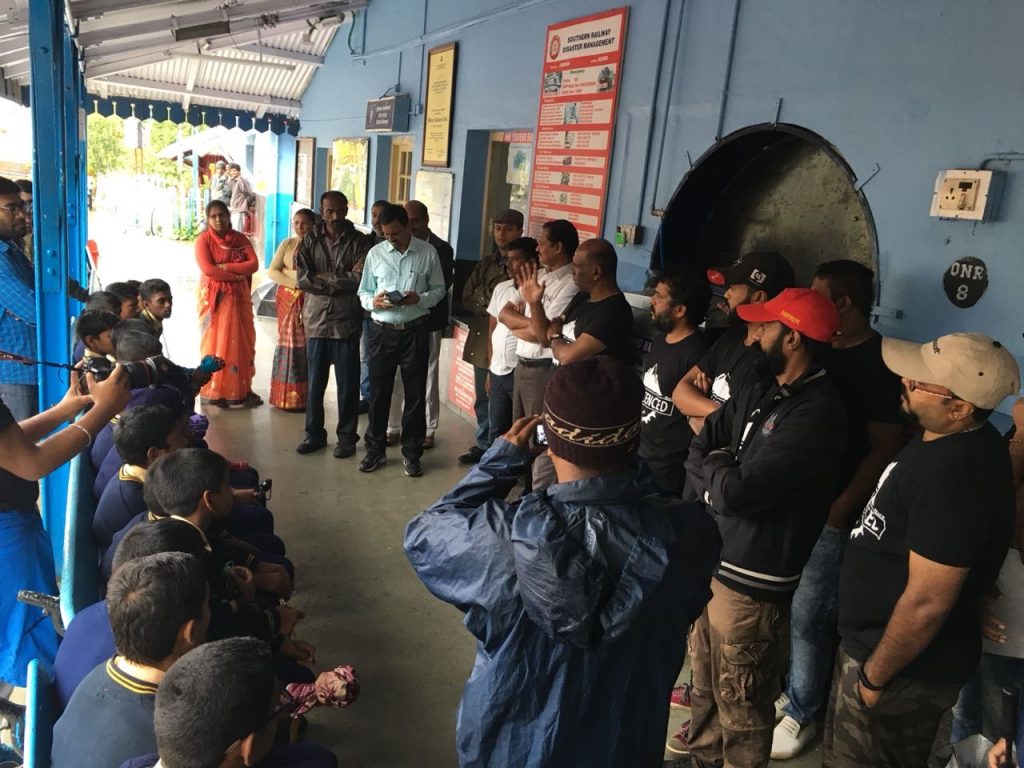
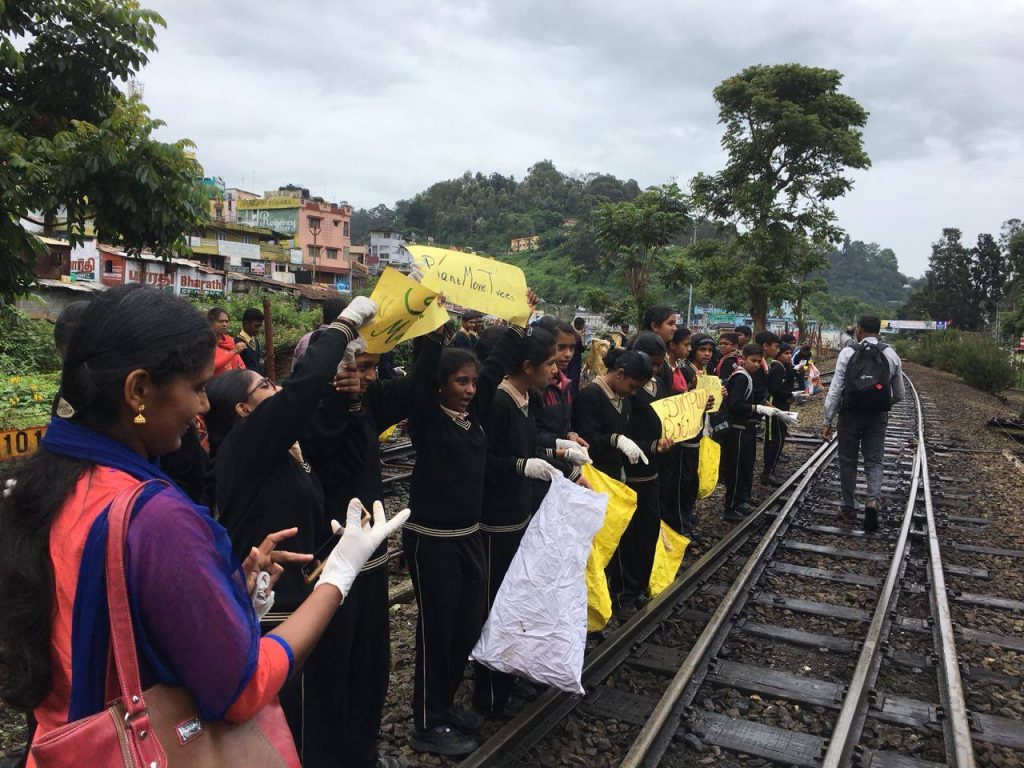
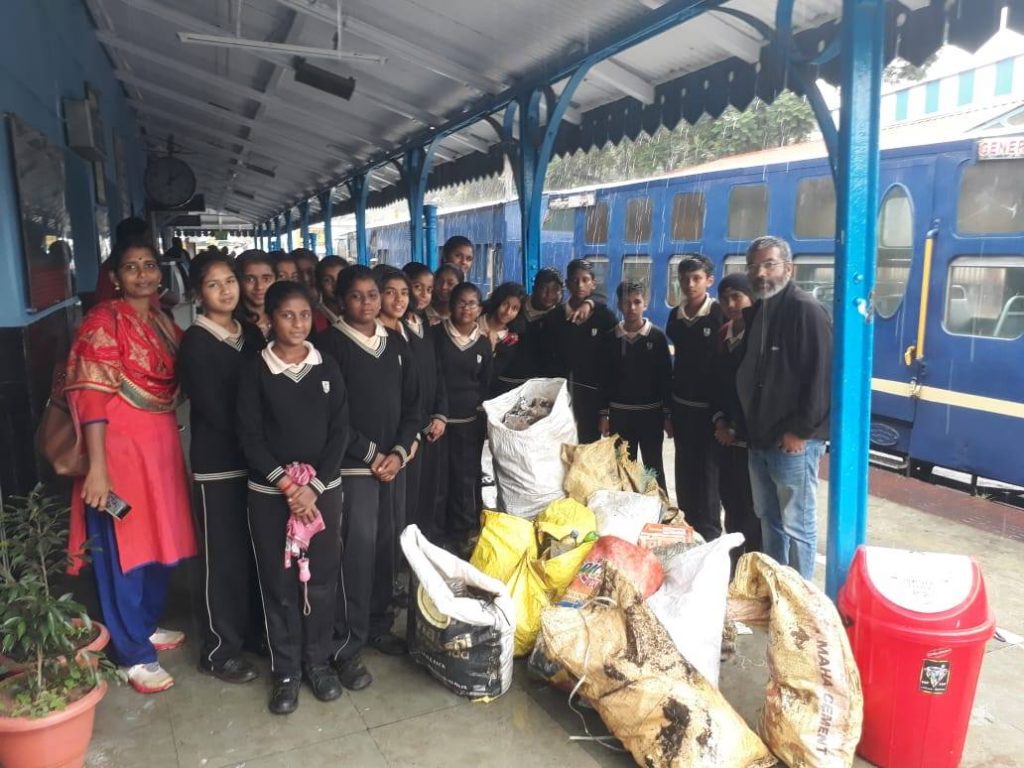
The English poet, literary critic and philosopher, Sir Herbert Read, is once known to have remarked, “Great changes in the destiny of mankind can be effected only in the minds of little children.”
This was none so well demonstrated, at the cleanup drive held at the Coonoor Railway Station yesterday, held as part of the activities concerning the Nilgiri Mountain Railway Day which falls on 15 June. The event was jointly organised by the NMR and Southern Railway officials, and the Clean Coonoor Group.
Donning on gloves and braving a chilly and steady drizzle and occasional downpours, the students belonging to the Riverside Public School – Kotagiri, and Timbre Tops – Coonoor, went about the premises with a single purpose ; to clear the surroundings of the plastic and the other debris strewn about by the thoughtless and the mindless. Such were their actions that they not only motivated the other volunteers, but as well the touched the conscience of many a bystander ; for many soon stopped littering, and a few even volunteered to participate in the cleanup. The end of the day yielded nearly half a ton of single-use plastic and other trash.
World Environment Day
Jun 05
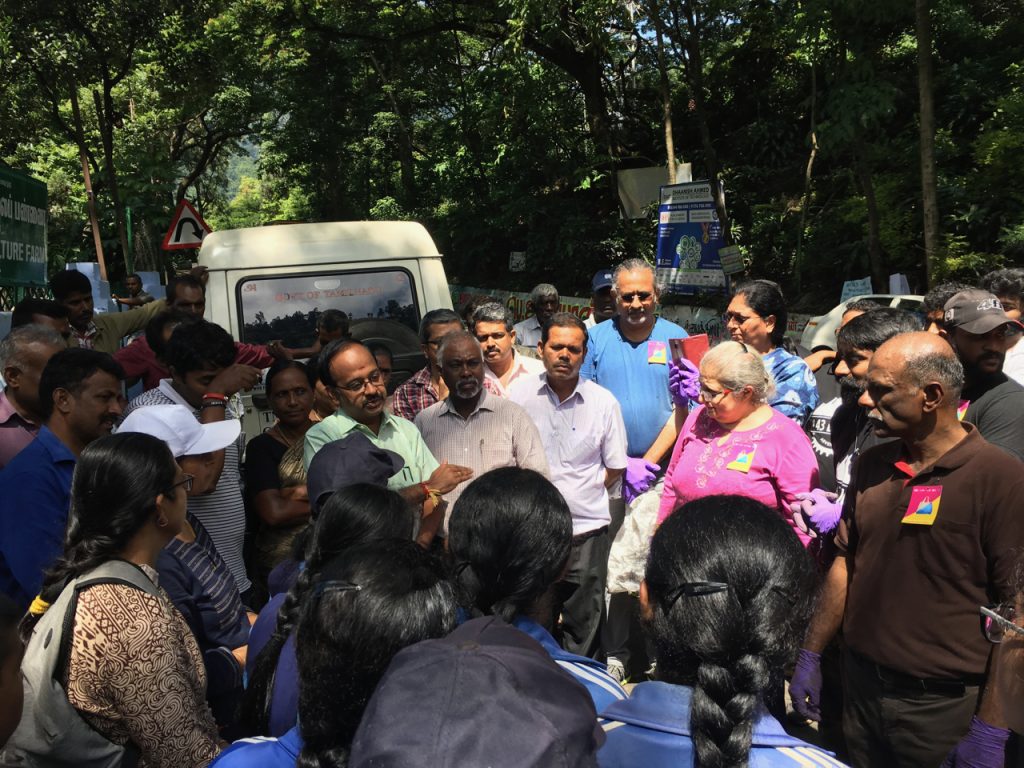
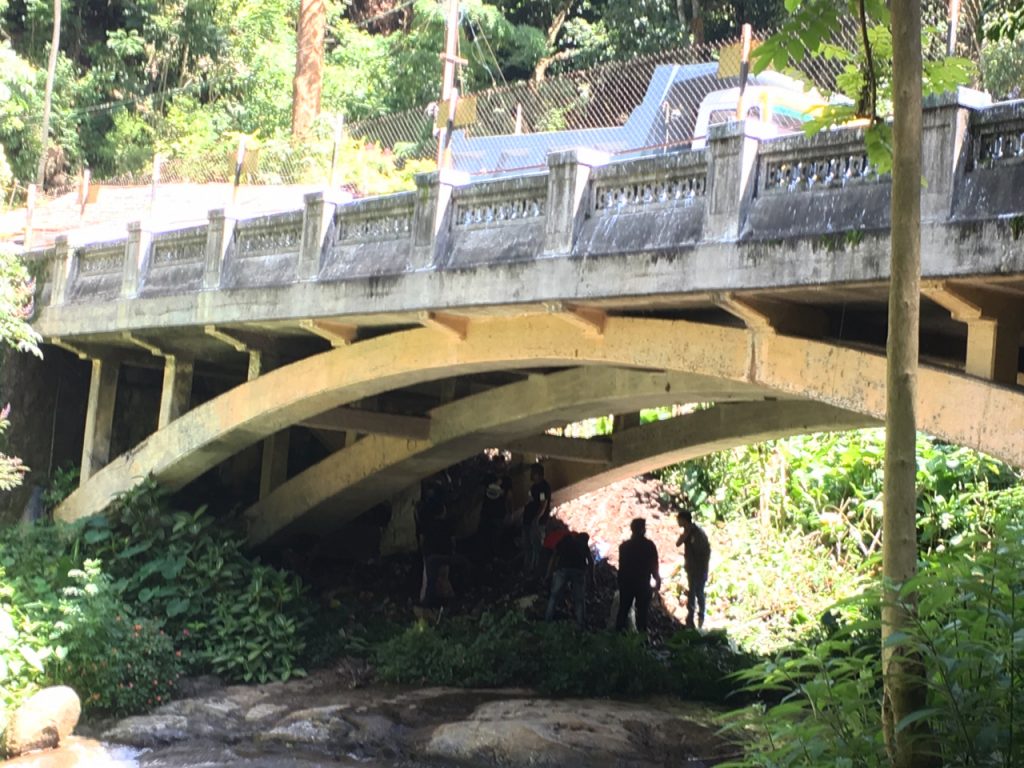
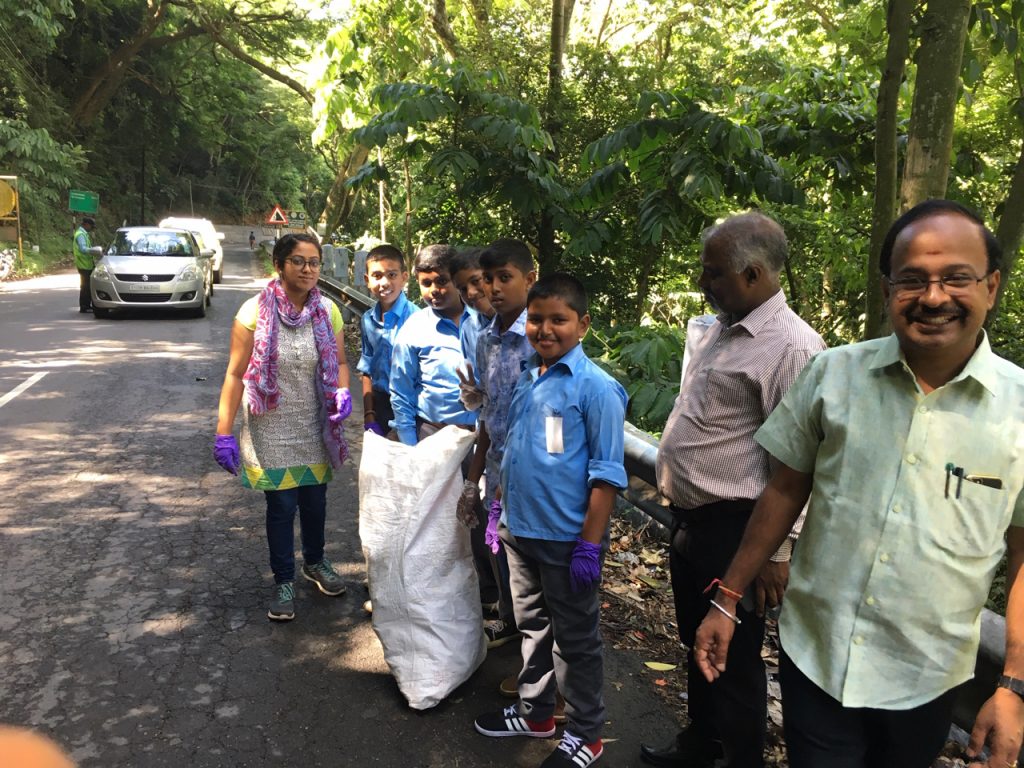

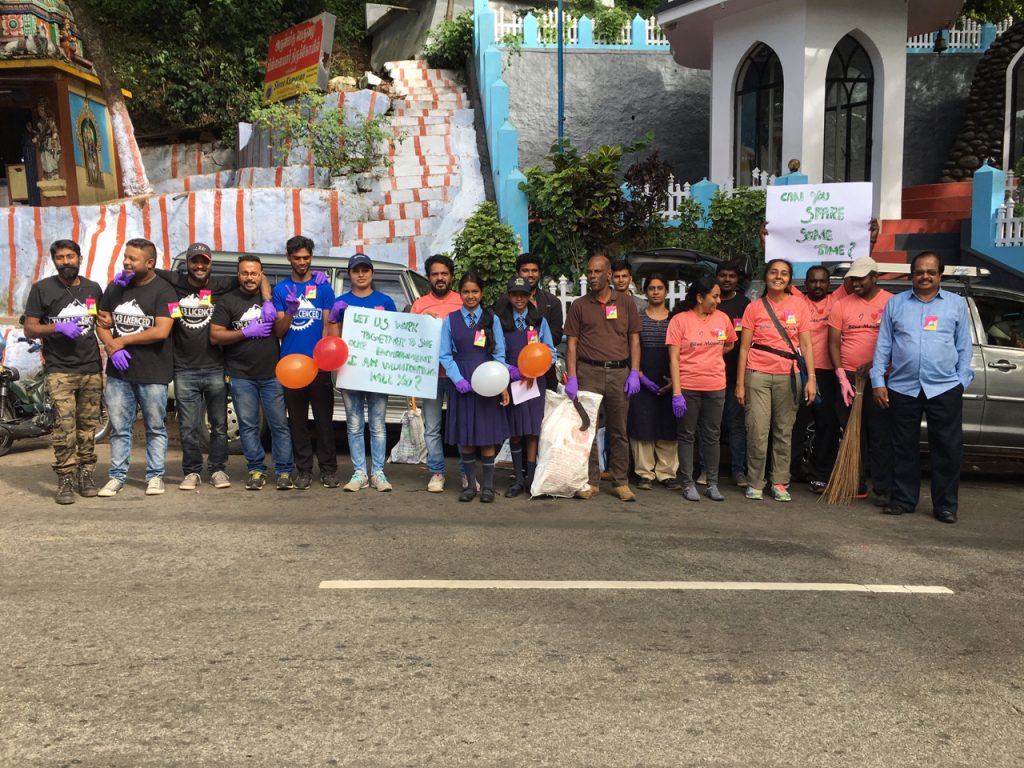
That plastics used anywhere ultimately get washed into the riverine systems and finally end up in the oceans is a well known fact, and its effects on the aquatic ecosystem is well recorded, but the consequences of plastic pollution in other terrestrial environments remains largely unknown. To date, the majority of research has focused chiefly on aquatic systems, as 10 million to 20 million tons of plastic litter find their way to the oceans each year, but as to what happens to the rest which remains landlocked is anybody’s guess.
Such would have been the question on the minds of each and everyone, who volunteered and participated in the cleanup drive organised by ‘Clean Coonoor,’ to mark this year’s World Environment Day. The venues chosen were Burliyar and Kurumbadi, two littering hotspots, the first a main stopover and the next a popular picnicking location ; both lying astride a couple of fairly large mountain streams.
As expected there was much visible litter strewn about, on the roads, by roadsides, inside culverts and drains, around trashcans, but these were expected and were easily picked up.
What came as a surprise was the quantity of hidden litter, chiefly plastic debris carried away by the surface runoff during the rains ; and which had become enmeshed among the underwood, intertwined among riparian vegetation, entangled in between boulders, matted amongst the fallen leaf debris and such.
It is due time that we eliminated the unnecessary use of plastics, improve and insist on biodegradable alternatives, and, above all, fully understand what it means to live in a plasticised world.
60th Annual Fruit Show
May 25 & 26
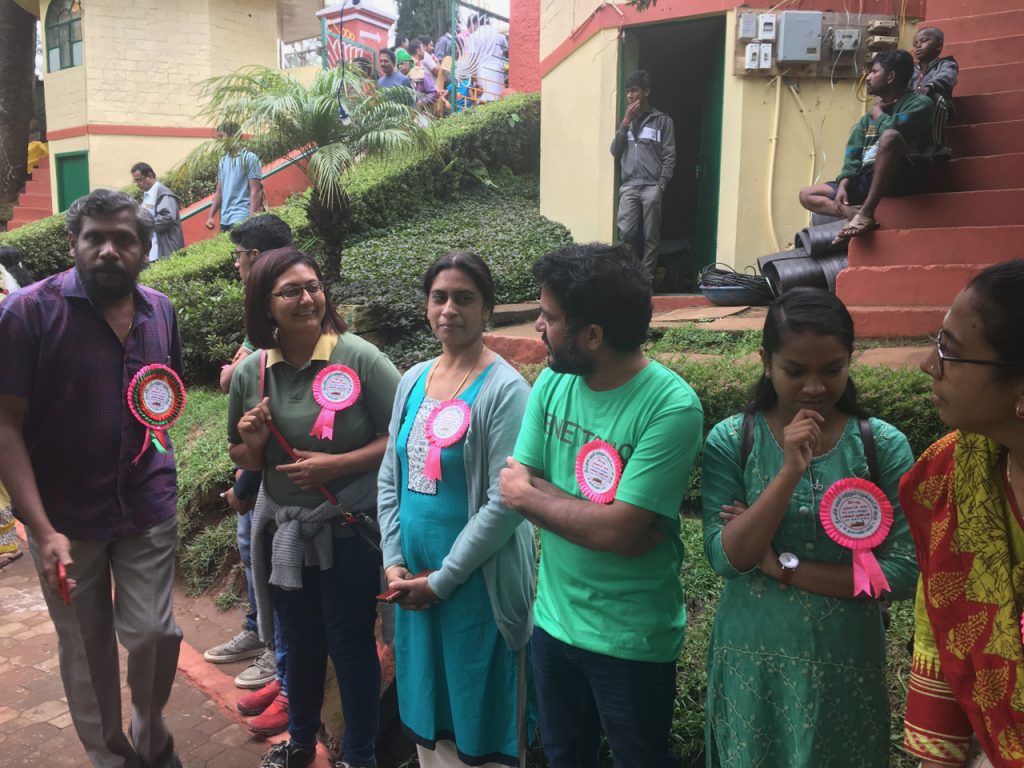
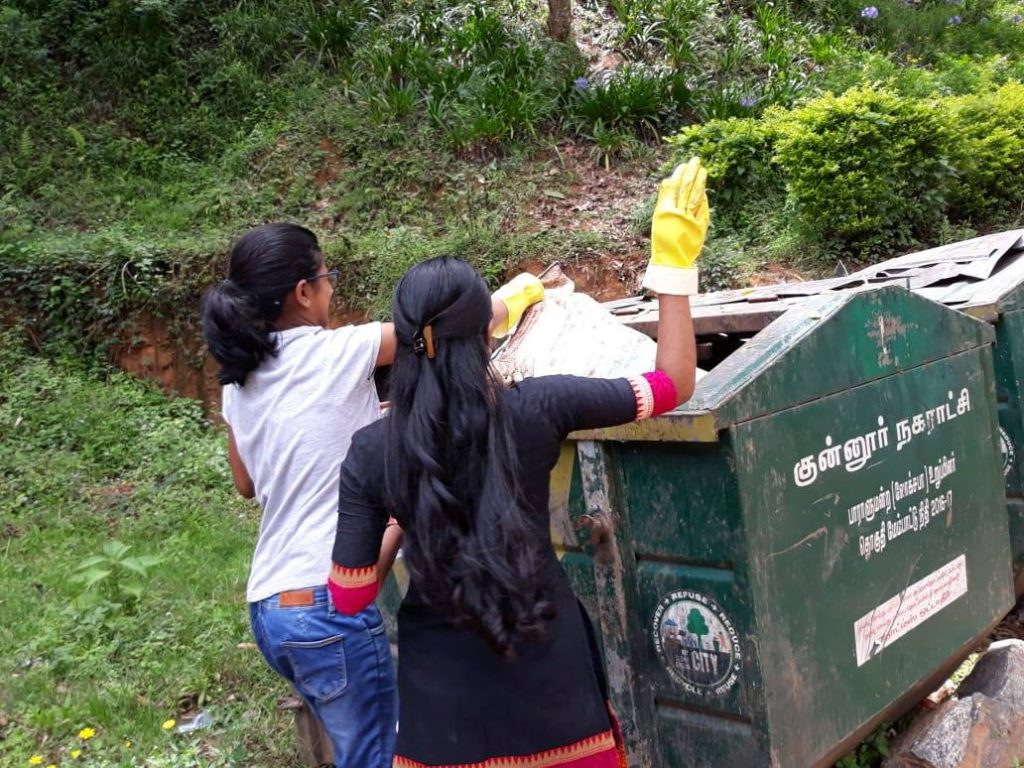

The 60th Annual Fruit Show hosted by the Department of Horticulture at Sim’s Park of Coonoor ended with a positive note on the sanitation front. The credit of preventing littering can be attributed entirely to the efforts of the municipal workers and a host of volunteers belonging to organisations such as Clean Coonoor, Sakthi Solutions and others.
The exercise of actively encouraging visitors to keep the premises clean, augmented further by timely clean-ups, was entirely fruitful, and the nearly century and a half old park still wore a relatively clean look at the end of the day. The grand finale was the cleaning up of the little stream which flows through the bottom of the ravine on which the park is situated and which had been choked with plastic of every description, by the Clean Coonoor Group.
Plogging
May 20
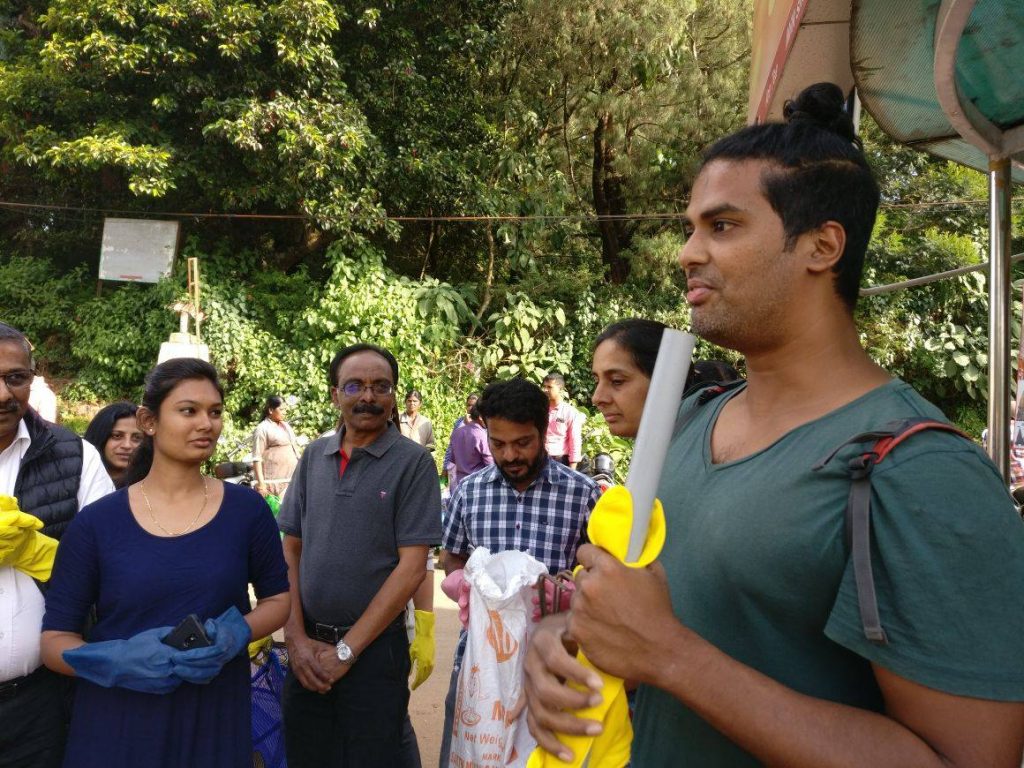
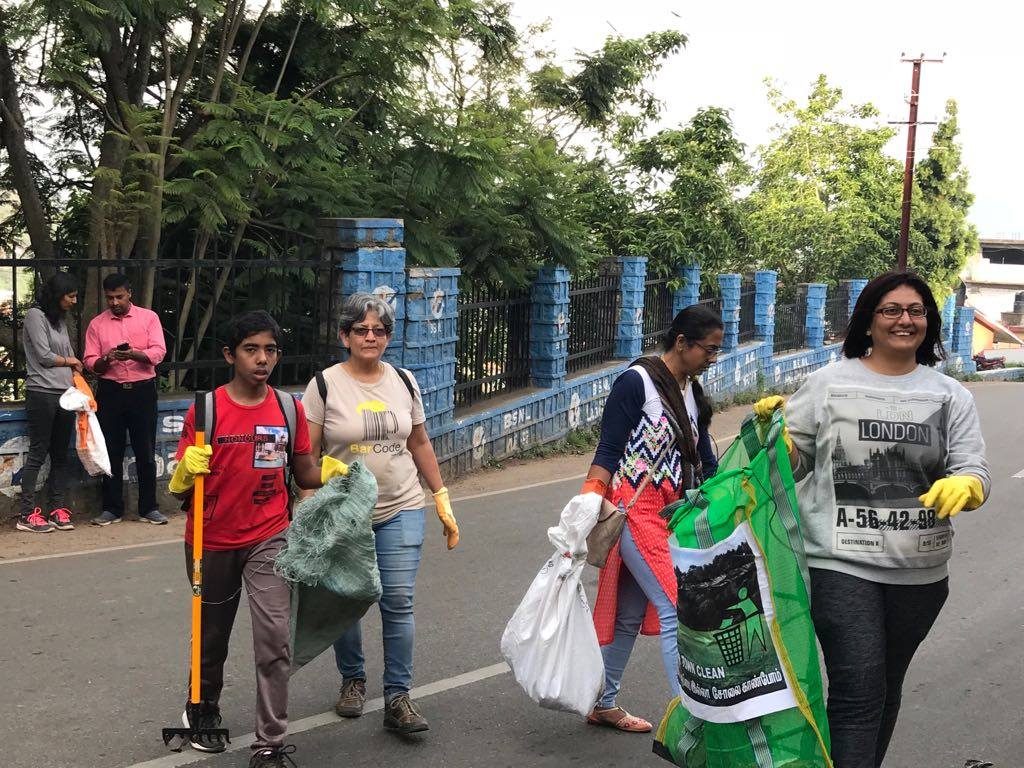
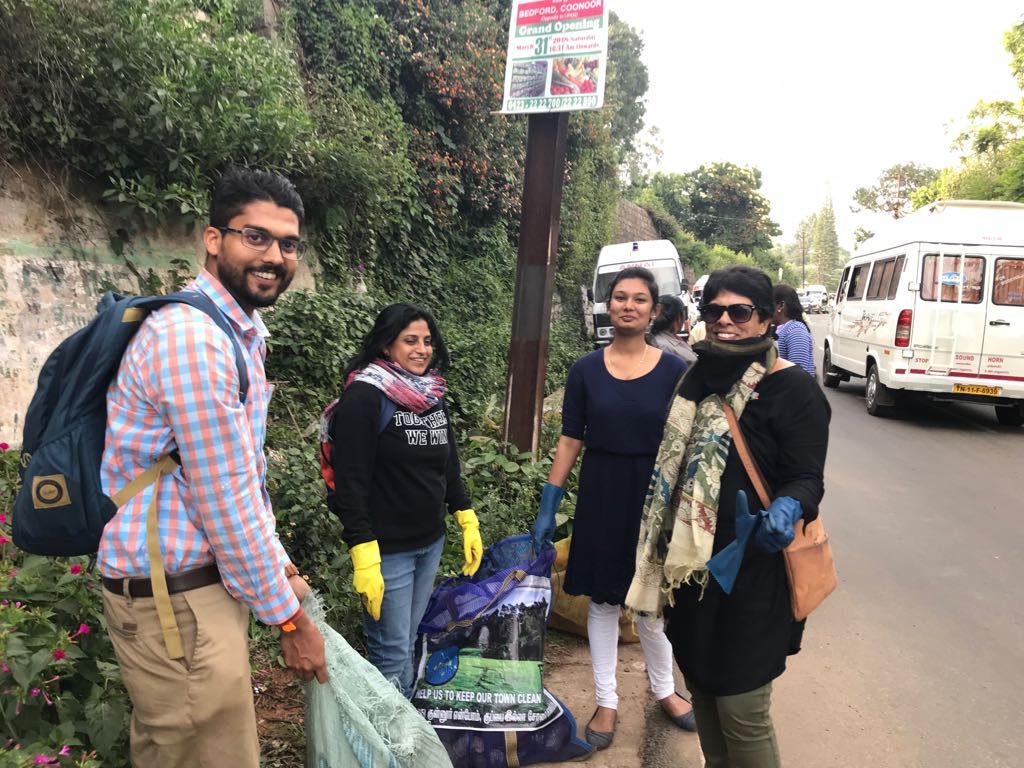
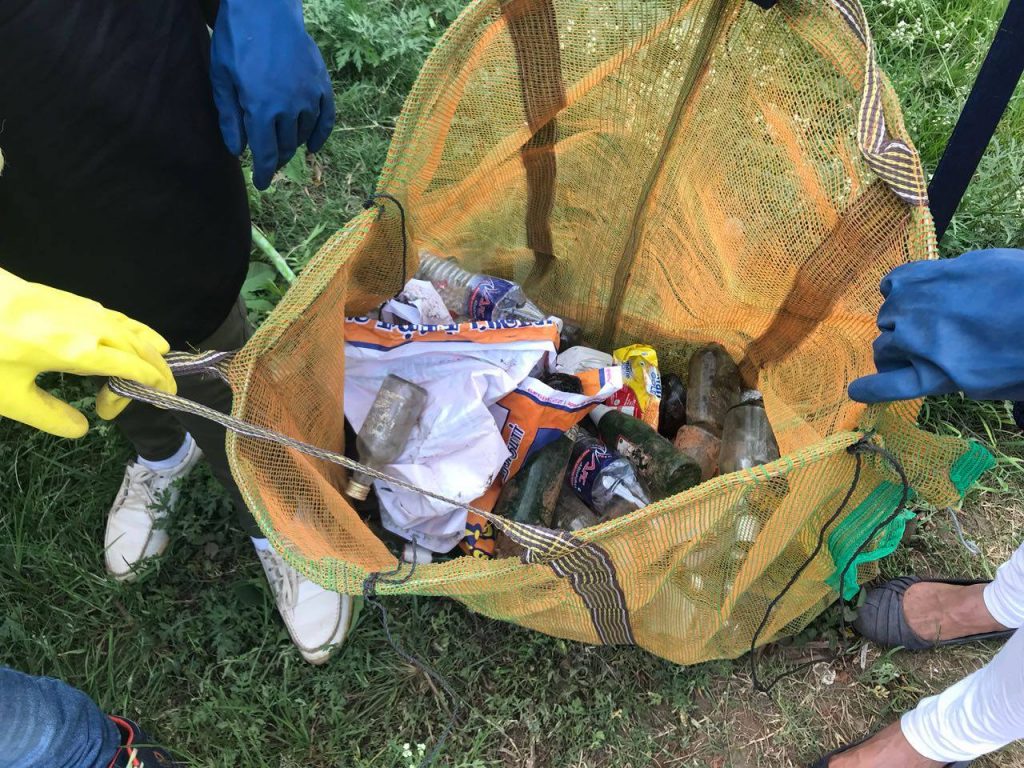
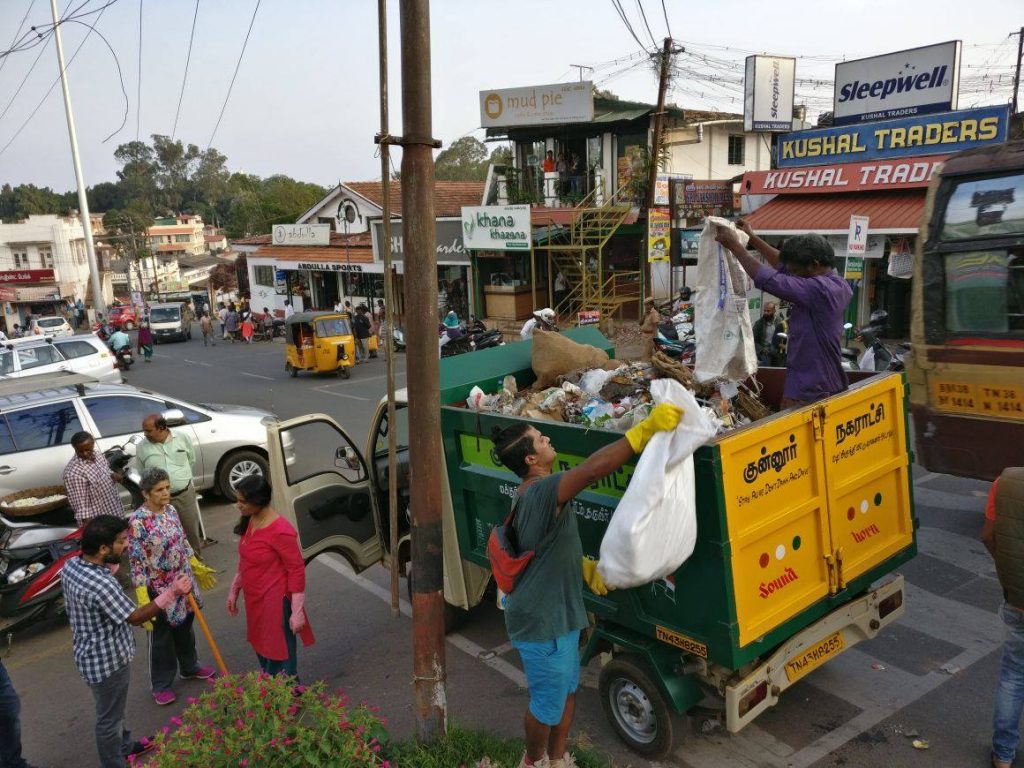
A Swedish initiative, ‘Plogging,’ an activity where jogging is combined with picking up litter, is described in the Oxford Dictionaries, as a derivation ; from “either plocka upp (to pick up) or plocka skräp (to pick up litter), and jogga (to jog)”.
The idea is rather a good one, for as a workout, it provides variation in body movements by adding bending, squatting and stretching to the main action of running ; and picking up litter either while jogging or even as a matter of fact when walking, is for certain going to result in cleaner streets particularly in a world now facing the threat of plastic pollution.
Such an exercise with a difference was carried out at Coonoor on Saturday by the Clean Coonoor Volunteer Group, co-ordinated by Bangalore based plogging enthusiast Jacob Cherian.
The latter has come up with a novel idea of plogging followed by a party. It is his firm belief that such an activity makes such pursuits more enjoyable than tiring ; also offers a space for like-minded people to come together and share ideas ; and most important of all, help in getting rid of the stigma attached to cleaning up, a job which is in India, often sneered at and considered as infra-dig.
The plogging exercise revealed that as far as this town is goes, litter can be further subdivided into three categories ; inadvertent litter, intentional litter, and washed-up litter.
The first is what commonly meets the eye, strewn carelessly across the streets by both resident and tourist alike ; cigarette butts ; wastepaper ; wrappers, packets and boxes made from plastic, cardboard and paper ; water bottles ; disposable plates, drinking glasses, plastic spoons, and such like.
The next often escapes notice, these are mostly rubbish that are deliberately dumped behind bushes and other rank vegetation, inside culverts, in nooks and crannies, and etc. This type of litter is usually generated in bulk and is made up virtually anything made from wood, metal, glass, and cloth for the matter of fact. Empty liquor bottles top the list of such items with discarded building material coming in a close second.
The last is the most dangerous of all, rubbish which gets washed away in the surface runoff during heavy rains, from those that are either inadvertently strewn about or deliberately dumped, and such litter at times comes from far off places.
That plastic pollution can afflict land, waterways and oceans is well documented and is well known. Living organisms can be harmed either by mechanical effects such as entanglement in plastic objects, or by problems related to ingestion of plastic waste, or by exposure to chemicals within plastics that interfere with their physiology ; and humans prove to be no great exception. Perhaps what is really needed is a change in heart.












